INSIDE: RHODES SCHOLARS PLACE TO CALL HOME AURUM WINNERS
SPRING/SUMMER 2024
Engagingourdiversecommunities . gnivirD pgorsser ni citnaltA .snellabolgahtiwadanaC gniydobmE ytinummoc ecivres gninehtgnertS ruo spihsnoitaler , fAhtiwylralucitrapirnac Cidanana dna Idn iguone s c o m m u n i t i e s . F i l ling t he talent p ip e line. Advancing equity, diversity,inclusion,and accessibility. Driving innovation and entrepreneurship. Stsu ia in n g t h e o c e a n an d developing c limatetechnologysolutions. Improvinghealth outcomes. Increasing food security. Leadingsocialchange.
What does transformational change look like?
It all starts with extraordinary partnerships and ends with extraordinary solutions. Because if we’re going to change the world, we can’t be worlds apart. That's why we're Bringing Worlds Together. (p. 24)
Attractingmore grad uat e st ud e n t s . I t m e a sn gnitarelecca gih hs’tI.egnahclabolgrofhcraesertcapmi tnemtimmoc ot noitaroballoc tsomehtfoemosrofsnoitulosdnfot lpmocxe lgbola hcla l ne eg s o f o u r t im e. dutsgnisaercnis’tIftneicnanla troppus dna c r e a t i n g e v e n more opp ortunitiesforstudentsuccess.It’senhancingprograms, services, andresources.
AdvancingAIanddigitali nnovation . I t means l
It means preparing thenextgeneration o fleaders t o f ace t h e f u t u r e eh a d.no tI snaem adanaCgnimocebs’ tsom ,cirtnec-tneduts evisnetni-hcraeser ytisrevinu .
aut,l uc .seitinummocruofoytilativcimonocednalarutl
MAGAZINE
t
i f
i n g t h e i n t e l cel




BOOK TODAY NEPTUNETHEATRE.COM TICKETS STARTING AT $33 FEATURING JULIE MARTELL , LINDSAY KYTE , WITH IAN SHERWOOD , LISA NASSON & MICHELLE YU CREATED BY LINDSAY KYTE & MIKE ROSS ARRANGEMENTS BY MIKE ROSS DIRECTED BY SAMANTHA WILSON



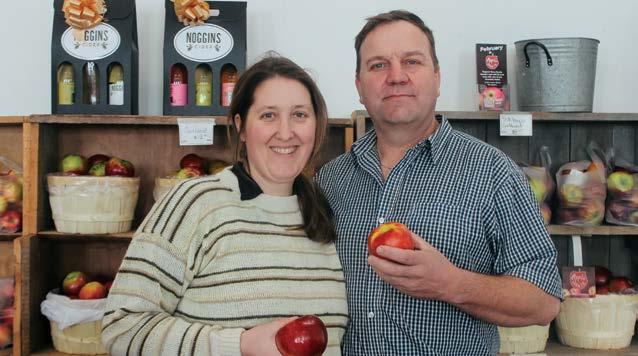
Facebook facebook.com/dalhousieu | facebook.com/dalumni X @dalhousieu, @dalpres, @dal_alumni
Instagram instagram.com/dalhousieu | instagram.com/dalalumni
Youtube youtube.com/dalhousieu
LinkedIn linkedin.com/school/dalhousie-university TikTok @dalhousieu
University is located in Mi’kma’ki, the ancestral and unceded territory of the Mi’kmaq. We are all Treaty people.
recognize that African Nova Scotians are a distinct people whose histories, legacies and contributions have enriched that part of Mi’kma’ki known as Nova Scotia for over 400 years.
DAL MAG SPRING/SUMMER 2024 1 CONTENTS FEATURES SPECIAL FEATURE: WORLDS OF OPPORTUNITY Dalhousie launches
$750-million
transformational change By Mark Campbell 24 STANDING UP FOR THE WORLD Generations of Dalhousie’s Rhodes Scholars are a force for good By Ryan McNutt 37 GIMME SHELTER Canada needs more homes—and fast By Matt Reeder 42 GOLDEN MOMENTS Celebrating the 2024 Aurum Award Winners By Emily MacKinnon 48 DAL NEWS 4 FOUND 11 RESEARCH ROUNDUP 12 EVENTS 14 READ.WATCH.LISTEN. 16 PEOPLE 18 CLASS NOTES 54 FACULTY NEWS 58 FUTURE ALUMNI 60 Dalhousie University
MAGAZINE
2024
its
campaign for
DAL
Spring/Summer
42 Dalhousie
We
48 37
Dal Alumni Benefits Program
MESSAGE FROM THE PRESIDENT, DR. KIM BROOKS
spring 2023
This spring, we launched Bringing Worlds Together, Dalhousie’s campaign for transformational change. With a goal of raising $750M, it’s the largest university fundraising initiative in the history of Nova Scotia. And the time is right. Over the past decade, Nova Scotia has become one of the most exciting places in Canada, a place where we are racing to keep up with demands for capacity, talent, and infrastructure.
We know that Dal’s success is intrinsically tied to Nova Scotia’s success. So, aligned with the province’s momentum, our campaign goal is bold and lays its foundations where we make our home, knowing that our impact will be global.

Our campaign focuses on three pillars: inspiring future-ready leaders, engaging in high-impact research, and lifting our communities. The third pillar has special resonance this spring as we dig into what it means to lift our communities. In February, the Province of Nova Scotia offered details of a new funding model for Nova Scotia universities. That model invites us to work collaboratively with partners in the pursuit of excellence. We know we play an important role in the social fabric of Nova Scotia, in growing the skills and talent to help meet the changing needs of the province, and in expanding economic impact. In April, we hosted our first faculty and staff workshop, focused on “Lifting Nova Scotia.” When we started planning “Lifting Nova Scotia,” I had hoped that a few people around campus might set aside some time to share what
Take advantage of discounts
special offers from local, national and international
Dalhousie
hotels
local
more.
and
providers (including
Alumni owned businesses!) on everything from
and restaurants to
alumniowned businesses and
Please note that you must be a Dalhousie graduate in order to take part in this program. Questions? Email alumni.benefits@dal.ca to learn more. Signing up is easy and free!
How do you prefer to read Dal Magazine?
Please email alumni.records@dal.ca or scan the QR code and, using your full name in the body of the message, indicate your preference to receive either:
• a printed magazine, or
• a digital version that is sent by email.
Dalhousie is moving to a digital-first approach, including with our magazine. However, we want to deliver your flagship publication to you in the format you choose.

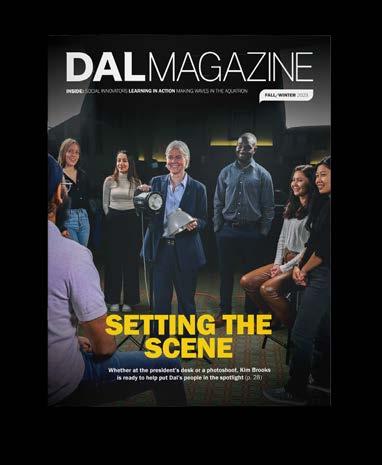

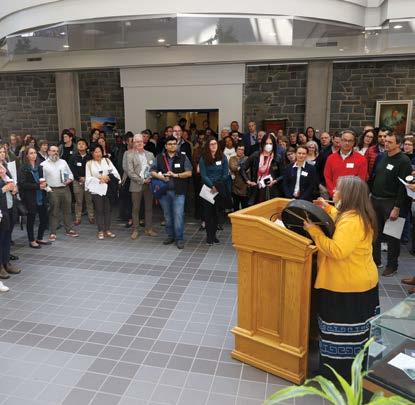
they were working on and dream about aspirational projects. The response was amazing. Close to 600 people came out to share their work and research in a packed, full-day agenda. Students, faculty members, and staff presented in close to 40 sessions that ranged from digital agriculture, to advancing our biomedical ecosystem, to community-engaged learning, to student retention, to public policy impact.
We’re at an exciting juncture. Dalhousie and Nova Scotia can make a difference at home and change the country and the world. That’s what happens when you bring worlds together.
ASSISTANT VICE-PRESIDENT, COMMUNICATIONS, MARKETING & CREATIVE SERVICES
Matt Proctor
EDITORIAL MANAGER
AnnMarie MacKinnon
EDITORIAL COMMITTEE
Sheila Blair-Reid
Mark Campbell
Alison DeLory
Keri Irwin
Ryan McNutt
Laurel Munroe
CREATIVE DIRECTOR
Paul Williams
DESIGN
Dalhousie Creative Services,
Katie Goodz
ADVERTISING ENQUIRIES dalmag@dal.ca
ADDRESS CHANGES
Phone (902) 494-6855
1 (800) 565-9969
EMAIL
alumni.records@dal.ca
POSTAL MAIL
Alumni Records, Office of Advancement, Dalhousie University, PO Box 15000, Halifax, Nova Scotia B3H 4R2
DAL MAG SPRING/SUMMER 2024 3
NICK PEARCE
Lifting NS event
First-in-Canada battery innovation centre to provide research and industrial development
Canadian battery science is about to get a turbocharge with the creation of the country’s first university-based battery
produce, and test new batteries. It will also be a magnet for industry in urgent need of the sophisticated equipment and the expertise to operate it.
Currently, battery scientists in academia and startups are required to send designs for new batteries they want to study to third parties outside Canada for manufacture. Drs. Michael
with a $5-milliion grant from the Canada Foundation for Innovation, $350,000 from Emera Inc., $200,000 from Tesla, and additional matching and promised funds, the financial power is in place to jolt the project into gear.
“We will be able to produce 50 to 100 battery cell prototypes a week at the centre,” says Dr.

prototyping and testing facility. Called the Canadian Battery Innovation Centre, the new leading-edge lab is projected to open in fall 2025 in Dalhousie’s Sir James Dunn Building. The facility will be a game-changer for the university’s battery researchers, allowing them to rapidly envision,
Metzger and Chongyin Yang, the Dalhousie battery researchers championing the innovation centre, say it will vastly accelerate the speed of experimentation and innovation—turning a process that currently takes months into days.
Construction has yet to start on the $20-million facility, but
Metzger, Dalhousie’s HerzbergDahn Chair in Advanced Battery Research. “Our focus is on high quality and flexibility, so that we can test many different battery chemistries and materials combinations.”
A series of state-of-the-art machines in an ultra-low humidity “dry room” will provide an assembly line for researchers to create battery cells to the highest industrial standards. Comprising different functional
zones, the lab will include large mixers and furnaces to make battery materials, a smaller closed-off room for the dirtier operations like mixing powders, and a main battery assembly room that includes large coating machines. There, mixtures of battery active materials and other solvents get applied on metal foil that is then rolled up, inserted, filled and sealed into cell casings by a final group of machines.
The centre’s production line will allow researchers to create batteries using a wide range of materials, including the lithium used in conventional rechargeable batteries, as well as sodium, potassium and other more abundant materials that promise to decrease battery cost and increase lifetime, efficiency, and sustainability. Dr. Metzger says the researchers will also focus on the development of new methods of production to remove toxic solvents and polymer binders that are in the process of being banned or shelved by the industry.
“This battery innovation centre will put an extremely powerful tool into the hands of our world-renowned battery scientists and bring them together with industry so that innovations can be put into action quickly,” says Dr. Alice Aiken, Dalhousie’s vice-president, research and innovation. “We’re catalyzing a cluster for battery research and development in Nova Scotia that promises to be transformative for the science, sector, and regional economy.” —Andrew Riley
DAL MAG SPRING/SUMMER 2024 4
NEWS
NICK PEARCE
Drs. Yang and Metzger

Dr. Anya Waite’s ocean research recognized with prestigious Yoshida Award
Dr. Anya Waite, chief executive officer and scientific director of the Ocean Frontier Institute, has been selected by the Oceanographic Society of Japan as the 2024 recipient of the Yoshida Award.
The award is granted to a researcher in recognition of their outstanding contributions to the advancement of ocean upwelling research, including physical, chemical, and biological phenomena and their effects on climate and ecosystems.
Ocean upwelling involves wind-driven movement of dense, cooler, and usually nutrient-rich water from deep water towards the ocean surface.
“Dr. Waite’s scientific achievements are immense,” says Dr. Naoto Ebuchi, president of the Oceanographic Society of Japan.
“Building on her expertise in biological oceanography, Dr. Waite has collaborated with physical and chemical oceanography colleagues and has succeeded in conducting a wide range of interdisciplinary research topics.”
Commemorating the late Professor Kozo Yoshida, the award is given to one recipient each year.—Greg Hanna
Dal lab explores how to unlock the power of green hydrogen in Nova Scotia
A new lab established at Dalhousie in February has partnered with a local energy provider to explore applications of hydrogen that could assist Nova Scotia in its efforts to achieve net-zero greenhouse gas emissions by 2050.

N.S.-based Eastward Energy has contributed $200,000 through an in-kind donation to support Dalhousie researcher Dr. Michael Pegg and his team in the Department of Process Engineering and Applied Science as they investigate low-carbon solutions for its distribution system, including the distribution of hydrogen-enriched natural gas.
Scotia
Houston,
speaks with Engineering student Vansh Pandhi, centre, and Dr. Michael Pegg, second from left, outside Dal's Hydrogen Applications Research Lab.
DAL MAG SPRING/SUMMER 2024 5
Dr. Chongyin Yang, Dalhousie’s Tesla Canada Chair, in Dalhousie's current battery testing lab.
NICK PEARCE, DANNY ABRIEL
Nova
Premier Tim
right,
“We see the opportunity that is before us to become an absolute energy powerhouse in this province,” said Nova Scotia Premier Tim Houston at a launch event. “That is what lays before us with the opportunity that we have in green hydrogen.”
Nova Scotia’s Green Hydrogen Action Plan, released in December, lays out guidelines for government and industry in the province in the development of green hydrogen—an alternative clean energy source. While traditional methods for producing hydrogen used fossil fuels and emitted greenhouse gases, green hydrogen is produced using renewable electricity and emits only water and heat when converted to electricity.
Premier Houston explained that Nova Scotia’s abundant offshore natural resources, including wind and tidal power, make it well situated to the large-scale development of green hydrogen.
“Collectively, we really have an opportunity here that we have to seize, and I’m seeing groups step up and want to be part of that,” he said, mentioning municipalities, private-sector partners, and universities like Dal.—Matt Reeder

Dal scientists develop device that helps improve spinal surgery outcomes
It’s estimated that 80 per cent of people will experience back pain, with up to 20 per cent of those undergoing surgery at some point to relieve the nagging discomfort.
Many of those procedures are done with a minimally invasive approach rather than open surgery, thereby reducing both the time to perform surgery and the trauma experienced by the patient. Sometimes, however, the area of the spinal cord or nerve root compression can be obscured by body parts, which can result in ongoing symptoms or the need for further surgery.
Dalhousie researchers think they can change that by giving surgeons “eyes” on the injury.
They have developed a sleek, high-resolution probe that can travel to the site of the spinal compression and provide a clear view of the surgical area before and after the procedure is done to make sure the nerve has been decompressed.
The result? A significant reduction in the number of surgeries that have to be repeated.
“It goes right next to the spinal cord in the surgical pathway,” says Dr. Jeremy Brown, a professor in Dalhousie’s School of Biomedical Engineering, who developed the endoscopic imaging probe. “So, you can take some images before the surgeon removes the herniated disc or whatever is compressing the spinal cord, the surgeon then removes the material surgically and then you take some more images and say, ‘OK, is the
nerve still being compressed or is it free now?’”
The probe is guided to the site of the compression through 18-millimetre tubes and can then begin to capture images.
After receiving Research Ethics Board approvals to use the device on 20 patients, Dr. Brown worked with Dalhousie professor and neurosurgeon Dr. Sean Christie to test the probe on an observational basis and validate its efficacy.
So far, Dr. Brown has used the probe on three patients undergoing spinal cord surgeries. The results were remarkable, with the probe providing a vivid view of the spinal anatomy and nerves previously unseen by the surgeon.
“What was surprising was because the resolution is amazingly high, we saw anatomy inside of the sac that goes around spinal cord. We could see nerves and other things that the surgeon said we had never seen before,” says Dr. Brown, adding that this raised the possibility of using the probe in other medical procedures.—Alison Auld
Schulich Law professor wins Nova Scotia Human Rights Award for advocacy work
Sheila Wildeman, an associate professor in the Schulich School of Law, is one of 2023’s recipients of a Nova Scotia Human Rights Award.
The Nova Scotia Human Rights Commission presents the awards annually on or around
DAL MAG SPRING/SUMMER 2024 6
KINDEL MEDIA PHOTO/PEXELS
A sleek, high-resolution imaging probe developed at Dal provides a vivid view of spinal anatomy that helps doctors be more precise during surgery.
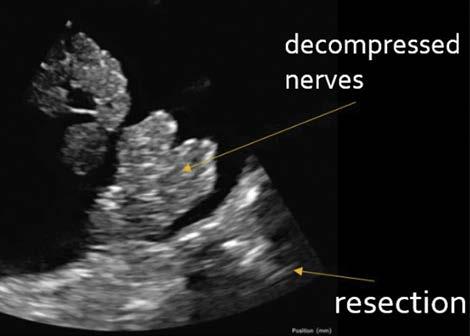
International Human Rights Day (December 10) to recipients nominated by their peers. Wildeman was recognized with an Individual Award for her advocacy for the human rights of incarcerated people and people with disabilities.
“The principles enshrined in human rights law have the power to unite us in our pursuit of equity and the protection of one another’s inherent dignity,” says Joseph Fraser, director and CEO of the Nova Scotia Human Rights Commission. “[The] award recipients exemplify a commitment to empowering people that all Nova Scotians should aspire toward.”
The Individual Award is presented to a person who demonstrates leadership and whose work has contributed to change in their community by advancing equity, inclusion, and the value in promoting and protecting human rights.
In addition to teaching at the law school, Wildeman is also the associate director of the Dalhousie Health Justice Institute (DHJI) and co-chair (with Schulich Law grad Harry Critchley) of East Coast Prison Justice Society.
Her research and publications, like her community work, explore how law may be used to advance the justice aspirations of persons marginalized by legal as well as health and social service systems.
“This award recognizes work I have done that has taken an increasingly focused and collaborative form in the last 10 years or so, alongside a vibrant community of social justice advocates, researchers, and survivors of incarceration and institutionalization in Nova Scotia and beyond,” says Wildeman.
—Amanda Kirby-Sheppard
High-resolution image captured by researchers shows a decompressed nerve.
Dal launching Atlantic Canada’s first Master of Nursing program in mental health and addictions
Registered nurses looking to gain advanced skills and education in mental health and addictions care now have the opportunity to do so in Nova Scotia through a new Dalhousie program.
The Faculty of Health’s School of Nursing will offer Atlantic Canada’s first Master of Nursing, mental health and addictions program starting in fall 2024.

“Nova Scotia nurses currently working in mental health and addictions can apply for this new master’s program, which will deepen their clinical and leadership expertise, provide valuable advanced credentials and prepare them for rewarding career opportunities in advanced nursing practice, leadership, education and management/ administration,” says Dr. Ruth Martin-Misener, director of Dal’s School of Nursing.
The new degree program is open to nurses with two years of clinical experience in the mental health and addictions field within the past five years.
There are 22 spots available in the nursing program, which will launch in fall 2024.
DAL MAG SPRING/SUMMER 2024 7
SUPPLIED
This graduate program can be completed in two years as a fulltime student or in three years as a part-time student.
“The new Master of Nursing, mental health and addictions is another way we are growing our health-care teams right here in Nova Scotia,” said Brian Comer, minister of addictions and mental health. “The new program will help nurses grow their clinical expertise to help Nova Scotians, as well as pass their knowledge to their fellow nurses who are building careers in mental health and addictions.”
The Office of Addictions and Mental Health and the Department of Advanced Education provided Dalhousie $306,000 to support the program, with additional funds committed in future years.
“We’re so proud to work with Dalhousie University and support this new master’s program for nurses who want to help people dealing with mental health issues or addiction,” says Brian Wong, minister of advanced education. “Time and time again, post-secondary institutions in Nova Scotia have stepped up to develop new programs or add seats to create additional training opportunities that will help transform the province’s healthcare system. This is innovation in action.”
—Terry Murray-Arnold

Rescued sea turtle released back into the ocean in Bermuda
Scottie the turtle is free at last.
The endangered green turtle drifted into cold Nova Scotia waters and was found hypothermic on a local beach late last year.
Dalhousie veterinarian Dr. Chris Harvey-Clark was instrumental in caring for Scottie after she was scooped up in Scots Bay and tended to around the clock in Dr. Harvey-Clark’s basement.
She’s now been released into a warm bay in Bermuda after being reared back to health.
The juvenile turtle was being taken care of by staff at the Bermuda Aquarium, Museum and Zoo in Flatts Village since arriving there in late November, thanks to the help of a team of veterinarians, government officials, a conservation group and a Canadian airline.
Scottie—who put on 0.5 kilograms while at the aquarium—was placed in a shallow
bay full of seagrass in the aptly named Turtle Cove, where she swam straight into a small beach and had to be turned around by staff before swimming off into deeper waters.
“It’s really so gratifying to see Scottie released and back in the wild,” says Dr. Harvey-Clark.
“This was a real team effort and I have said before, it takes a village to save a turtle. These cold-stranded turtles are usually nearly dead when we get them and it’s a rarity to have one survive.”—Alison Auld
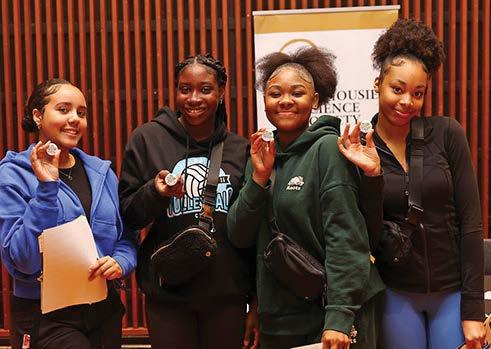
DAL MAG SPRING/SUMMER 2024 8
A sea turtle enjoys warm waters
NEWS NICK PEARCE
Auburn Drive High students show off buttons given out at the Dalhousie Science Society booth.
Science-led event connects Black and African Nova Scotian high school students with the Dal community
Dalhousie’s Faculty of Science hosted its first-ever dedicated engagement event designed to establish connections between prospective Black and African Nova Scotian students and members of the Dal science faculty.
More than 100 participants attended the day-long event in March where they had a chance to meet current students, alumni, and faculty.
Attendees explored booths staffed by representatives from Faculty of Science programs and groups, including Imhotep’s Legacy Academy, the PLANS Global Health Office, and
the Inclusive Pathways to Medical Professions initiative.
After lunch, students heard from an alumni career panel, engaged in a round of science trivia, and broke into groups to tour the Aquatron, SURGE, and chemistry and biology labs. The day concluded with a short visit to the Black Student Advising Centre.
Auburn Drive High students Ikenna Chinye, Sydney Stonehouse and Adina Mokoena were among the more than 50 prospective students from five local high schools in attendance. Ikenna has his mind set on coming to Dal to study pharmaceutical science (“I’m planning on getting a scholarship, but even if I don’t, I’m guaranteed to come here,” he said), while Sydney is undecided on which university to attend but plans to study mechanical engineering.
Attendees chat with students from the Dalhousie Science Scholars and Leaders Program.

Dal experts in the news.
CBC Halifax councillors tweak zoning changes for fast-tracking housing
“Housing isn’t a crisis. Housing is a continuing need. If we want to grow as a city, as a region, as a province, we have to find a way to grow around the right infrastructure, and that's where government should be investing.”
Frank Palermo
professor emeritus, School of Planning
THE COAST Restoring an unsung hero: How eelgrass is making its comeback in Nova Scotia
“It is extremely efficient in trapping carbon and storing it. About 0.2% of the global ocean is occupied by seagrasses, but it does store a disproportionately large amount of carbon in the ocean.”
Dr. Kristina Boerder
post-doctoral fellow, Biology
AL JAZEERA Why banning plastic bags will never be enough
“Invisible plastics are everywhere.”
Dr. Tony Walker
School for Resource and Environmental Studies
LOST COAST OUTPOST Bro, Harsh! Recent Studies Suggest Weed Strains Are Meaningless, CBD Doesn’t Ease Anxiety and Other Cannabis Wellness Claims are, Like, Totally Bogus
“We’ve been using this plant like crazy and moving it around the world like mad, and it’s been shuffling and we’ve been mixing the genomes together like crazy, and then it goes underground and nobody’s allowed to talk about it. And the only people who are able to go and do all this breeding are, you know, dudes smoking a ton of weed and, you know, breeding a bunch of cannabis. Things were flying around everywhere.”
Dr. Sean Myles
Department of Plant, Food, and Environmental Sciences
DAL MAG SPRING/SUMMER 2024 9
quoted.
NICK PEARCE
“As a young Black woman, I am interested in learning about illnesses affecting the Black community,” Adina said. “It was great to participate in this engaging event and to see Black representation in science at a major university.”
All three students were encouraged to attend by Karen Hudson (BA’88, BED’91, MES’02), the principal of Auburn Drive High and the creator of the school’s Africentric Math Cohort.
“As a Dal alum, it was exciting to see so many Black students participate in the Faculty of Science Engagement Event at Dalhousie University,” Hudson said afterward. “These opportunities are valid for providing awareness of possible careers for students of African ancestry to network and discuss programs. It offered excellent and vital exposure for our students.”
—Kenneth Conrad


DAL MAG SPRING/SUMMER 2024 10
Learn more about Dal’s UNIVERSITY ARCHIVES
Get the latest DAL NEWS at dal.ca/news
NEWS
at dal.ca/archives
Dr. Sophia Stone from the Department of Biology was one of the speakers at the Black and African Nova Scotian student engagement event
NICK PEARCE
Miscellany from past Dalhousie fundraising campaigns

found .
Audacious plans
Dalhousie’s history is peppered with generous—and timely—gifts, beginning with the largesse of George Munroe in the 1880s. However, despite subsequent legacies from businessman Alexander McLeod and long-serving chair of the Board of Governors Sir William Young, there was little left in the bank after building the new Dalhousie College. In 1890 the alumni met with the board and convinced them that the solution was to canvas Maritimers and raise $50,000 to shore up the endowment. But even with a $10,000 gift from confectionary manufacturer John P. Mott, Dalhousie’s first fundraising campaign was not considered a great success.
Fast-forward 20 years to the Dalhousie Forward Movement, an appeal for $300,000 to build the new Studley Campus. Despite challenges posed by inadequate contact information for some 2000 alumni, by October 1912 the campaign had exceeded expectations and raised $444,891. However, a Student Forward Movement calculated to piggyback on its success was thwarted by the start of World War One.
A dramatic increase in student numbers after the war brought back into focus the demand for residences, an arts building, a library stack, a gymnasium, and a student building. On top of that was an urgent need for endowments to increase teaching salaries and create new chairs in arts and in law. Thus began the Million Dollar Campaign of 1920, which ended up raising $2 million.
Ten years later, hopes were high for a $3-million campaign, thanks in part to active alumni associations in New York, Montreal, Toronto, and Vancouver, as well as an updated directory. However, the stock market crash of October 1929 felled campaign plans. In 1939 a Loyalty Campaign was started with a lofty goal of $4.4 million—once again, a world war intervened, and the campaign was postponed.
The second half of the twentieth century was more auspicious, beginning with the Dalhousie Expansion Appeal of 1945, framed as an investment in youth. Unprecedented growth in student enrolment and Dalhousie’s emergence as a leader in teaching, research, and community service throughout Canada were expressed in increasingly ambitious campaigns such as Dalhorizons (1969), Campaign for Dalhousie (1986), Capital Ideas (1994), and Bold Ambitions (2013).
Much has changed since the university’s appeal to alumni for “a quarter a week or a dollar a month,” but the pride of Dalhousians continues to keep apace with the extraordinary evolution of their beloved college by the sea.—Jennifer Lambert
DAL MAG SPRING/SUMMER 2024 11
NICK PEARCE
RESEARCH ROUNDUP
By Alison Auld, Andrew Riley, Dan Silberman
Where the atmosphere and ocean meet
Environment, Climate Action, Life on Land
Dr. Rachel Chang is an atmospheric scientist. But you won’t find her with her head in the clouds. Her focus is on the area just above the ocean’s surface, tracking how the particles that come from its waters impact the air above.
She is working with the oceanographers contributing to the Dalhousie-led Transforming Climate Action research program focusing on understanding the ocean’s ability to absorb the world’s carbon, but her work investigates the question from above the waterline.
Dr. Chang says fog offers an ideal laboratory for studying the interplay between air and ocean, especially when it’s composed of droplets formed on particles released by the sea. She focuses on these droplets because each of them is like a little floating beaker where chemical reactions take place.
RESEARCHERS:
Dr. Rachel Chang
Dangers of our digital exhaust
Internet-enabled devices listen to our every word and keystroke, but the data they collect and where it goes is not well understood. Dalhousie computer scientist Dr. Nur Zincir-Heywood is getting a handle on the risks in a corporate partnership with engineering firm Calian.

In an era where internet of things (IoT) devices—from virtual assistants and smartphones to coffee makers and washing machines—are ubiquitous, data exhaust is particularly troublesome. These devices are constantly listening, yet most of us have no idea how much data is being generated, how it is being collected, where it is going, and what it is being used for.
Recognizing that more research needs to be done to address these vulnerabilities, Calian partnered with Dalhousie University on a three-year research project to study the data exhaust of consumer IoT devices and find solutions to decrease risk.
RESEARCHERS:
Dr. Nur Zincir-Heywood
Storms diminishing water supply on fabled island Environment, Climate Action, Life on Land
Storms that have buffeted Sable Island for centuries appear to be taking a toll on the slim piece of land that sits almost 300 kilometres off Halifax and in the path of powerful nor’easters.
Researchers have found that a vital part of the ecosystem that sustains life there is being compromised. A Dalhousie team assessed the quantity and quality of the island’s fresh groundwater, which supports wild horses, plants, and birds.
They found that groundwater has been lost because of decades of dune erosion, seasonal waves, and hurricanes. When storms repeatedly batter the island, floodwaters can erode dunes and cause groundwater salinization to incrementally shift landward and lead to long-term freshwater loss.
RESEARCHERS:
Julia Cantelon, Dr. Barret Kurylyk
Cigarettes + marijuana = increased emphysema risk
Healthy People, Healthy Communities, Healthy Populations
Researchers have found that people who smoke both marijuana and cigarettes are 12 times more likely than non-smokers to have emphysema.
Dr. Jessie Kang, a cardiothoracic radiologist and assistant professor in the Department of Diagnostic Radiology, examined the chest CT images of four patient groups: non-smokers, cigarette smokers, marijuana smokers, and combined marijuana and cigarette smokers.
Preliminary findings suggest that those smoking both marijuana and cigarettes had more

DAL MAG SPRING/SUMMER 2024 12
RILEY SMITH, SUPPLIED
Dr. Rachel Chang on the coast of Nova Scotia capturing the chemistry of fog.
Aerial photo of ponds amongst the dynamic dune landscape.

emphysema—a condition where the air sacs in the lungs are damaged—than non-smokers or those who smoke cigarettes alone. This can lead to breathing difficulties and other serious respiratory symptoms.
Combined marijuana and cigarette smokers were three to four times more likely to have airway wall thickening than non-smokers.
RESEARCHER: Dr. Jessie Kang
Less long COVID in children
Healthy People, Healthy Communities, Healthy Populations
Children, it appears, experience long COVID at significantly lower rates than adults in Canada.
Researchers examined the proportion of children under age 18 who had symptoms that met the definition of long COVID, also known as post-COVID condition or PCC. The study involved follow-ups with 5,100 children and their caregivers at six and 12 months after they had been tested for SARS-CoV-2.
Overall, they found that very few infected children developed PCC, which involves symptoms that develop within three months of infection, are present at the time of follow-up, and affect everyday functioning. For example, just six of 1,152 children who tested positive for SARS-CoV-2 exhibited symptoms consistent with PCC at
a six-month follow-up. At 12 months, eight of 1,192 children were deemed to have PCC.
The team also measured quality-of-life reductions for children who tested positive for COVID, finding no substantial differences from those who tested negative.
RESEARCHERS: Dr. Jason Emsley; Dr. Stephen Freedman, Alberta Children’s Hospital; University of Calgary; McGill University; Université de Montréal; University of British Columbia; CHU de QuébecUniversité Laval; University of Ottawa; University of Manitoba; University of Toronto; McMaster Children’s Hospital; University of Saskatchewan; Newfoundland and Labrador Health Services; Queen’s University; Schulich School of Medicine and Dentistry; Public Health Agency of Canada
Shark finning rules may further decline of threatened species
Sustainable Ocean
Anti-finning regulations meant to stem the loss of various shark species have done little to reduce their mortality.
A unique global assessment has revealed that, while some restrictions do work, sharks are actually being caught by coastal fisheries at increasing rates. Finning often involves slicing off the animal’s fin and discarding the body at sea.
An international team of researchers examined shark catches from 2012 to 2019, when many new anti-finning regulations were implemented, to see whether conservation measures reduced species losses.
They found total shark fishing mortality increased to 80 million from 76 million sharks per year even though protective legislation to reduce finning increased more than tenfold during the same time.
While finning prohibitions likely reduced shark finning at sea, they had little effect on mortality overall. In fact, they may have even increased catches, possibly by incentivising the full use of sharks and creating additional markets for shark meat and other products.
RESEARCHERS: Dr. Boris Worm, Laurenne Schiller, Nidhi D’Costa; University of British Columbia; University of California
Driving decarbonization for the global shipping industry
Dalhousie grads Mo AlGermozi and Marciel Gaier are upending the global marine coatings industry with Graphite Innovation & Technologies (GIT), a business helping to decarbonize global shipping that was one of the first startups through the university’s Emera ideaHUB.
Based on their research as graduate students, the founders of GIT have developed marine anti-fouling coatings that are ultra-smooth, durable, and capable of improving the fuel efficiency of commercial vessels such as cargo ships and tankers.
The company has secured investment from several strategic sources, including from the investment arm of the StoltNielsen shipping company, and has grown to more than 30 employees hailing from nearly 20 different countries. It will soon boost its production six-fold by building a new 25,000 square foot, state-of-the-art facility in Dartmouth.
RESEARCHERS: Alumni Mo AlGermozi and Marciel Gaier

DAL MAG SPRING/SUMMER 2024 13 OCEANIMAGEBANK/TOM VIERUS
Blacktip reef shark entangled in coastal gillnet.
Marciel Gaier and his team analyse product data.
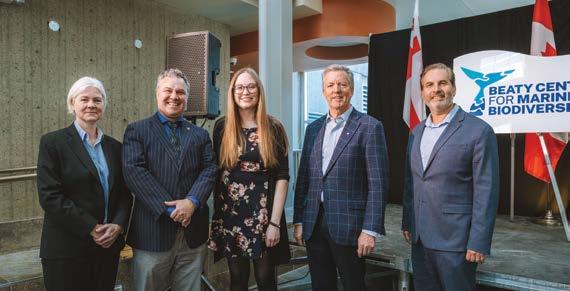
Beaty Centre
Dalhousie announced it will be building the Beaty Centre for Marine Biodiversity, thanks to an $8.2-million gift from Ross Beaty and his family. The new centre will showcase Dal’s research, foster more understanding about marine biodiversity, and empower people to take action to protect the ocean, its species, and delicate ecosystems.

Giving Tuesday
Dalhousie once again led the Food Security Project, a provincewide movement involving 10 post-secondary schools in Nova Scotia, in raising money and collecting food donations for campus food banks on Giving Tuesday.

Dal Reads
Author Sharon Bala, whose novel The Boat People was chosen by Dal Libraries at its Dal Reads selection this year, gave a reading and answered questions at an event in February.
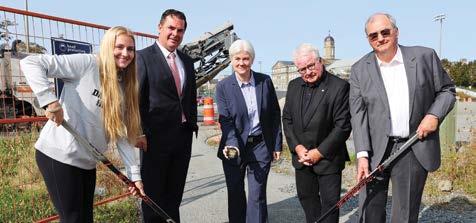
Events Centre
Dalhousie alumni, donors, and friends gathered to celebrate the start of construction of Dalhousie’s highly anticipated new events centre, now named the Oulton-Stanish Centre. Alumni Dr. Bill Stanish (MD’70) (second from right) and Ian Oulton (BA’66) (far right) were on hand for the ceremonial puck drop.

Calgary
Alumni gathered in Calgary for a social event where they mixed, mingled, and heard about new developments at Dalhousie.
DAL MAG SPRING/SUMMER 2024 14
events .

Musicale
The Dalhousie Alumni Association’s Women’s Division held its annual Student Musicale event in conjunction with the Fountain School of Performing Arts in January.

Stanfield
Panelists Megan Leslie (LLB’04), Naheed Nenshi, and Mark Jaccard, along with moderator Jeff Douglas (BSc’93), tackled the question “Can democracies meet the challenge of climate change?” at this year’s Stanfield Conversations event at Dal on October 24.



Women in Leadership
Dal Athletics hosted the Women in Leadership Dinner, presented by RBC, on November 30 at the Dalhousie Student Union Building.

New York Alumni in the New York area meet with members of Dal’s Alumni Engagement team on a beautiful fall evening.

Oktoberfest
At Dal’s Oktoberfest at Garrison Brewing, alumni celebrated milestone graduations ranging from 15 to 50 years, played trivia, and connected with local alumni while enjoying Bavarian-themed beverages and snacks.
WANT TO RECEIVE EVENT INVITATIONS?
Update your address at dal.ca/alumni or email alumni.records@dal.ca
See the latest event listings: http://www.dal.ca/alumni/ events-and-awards.html
DAL MAG SPRING/SUMMER 2024 15
AND MORE!
read .watch .listen .
Dal alumni and faculty share their books, television shows, films, webinars, and podcasts.
1. BOOK The Halifax Explosion: 6 December 1917, At 9:05 In the Morning
By Dr. Afua Cooper
Halifax poet laureate and Black Studies professor, Dr. Afua Cooper, delves into both the grief and the heroic actions of African Nova Scotians in the aftermath of the explosion.
2. PODCAST Frailty in Canada
By Dr. Kenneth Rockwood
Host Avis Favaro of the Canadian Health Information podcast speaks with Dr. Kenneth Rockwood of Dalhousie about the harms of frailty and what we can do to better protect older adults at risk.
3. BOOK Saltwater Chronicles
By Lesley Choyce
The poet and creative writing professor has published his 100th book, which details the “everyday disasters and discoveries that shape a life.”
4. EXHIBIT Botanica Tirannica
By Dr. Jonathan Ferrier
Dr. Ferrier is participating in a new exhibition that explores the prejudicial history of plant naming at Koffler Arts in Toronto. Botanica Tirannica opens May 30, 2024. Dr. Ferrier is acting as Indigenous Botanical Content Lead and is working with Brazilian artist Giselle Beiguelman on a display of living plants in the Koffler Arts Gallery.
5. BOOK
Under the Weather: Reimagining Mobility in the Climate Crisis
By Stephanie Sodero (MES’01)
Severe weather disrupts human mobility, including driving and flying, and our reliance on fossil-fueled modes of transportation alters the climate, in turn worsening weather. The book offers recommendations on how communities can shift their relationship with mobility in light of a changing climate.
6. BOOK
Dictionary of Fine Distinctions: Nuances, Niceties, and Subtle Shades of Meaning
By Eli Bernstein (BA’09)
Ever wondered about the difference between a ‘maze’ and a ‘labyrinth?’ Described as “a neurotic’s treasury of commonly confused objects, ideas, and words,” Eli Bernstein’s light-hearted dictionary is illustrated by New Yorker cartoonist Liana Finck.




Did you know you can ORDER BOOKS AND MORE ONLINE from the Dalhousie Bookstore? Go to dal.ca/bookstore
DAL MAG SPRING/SUMMER 2024 16
3. 6. 5. 1.




DAL MAG SPRING/SUMMER 2024 17 Enjoy your preferred rate and multiple benefits. 960-23307-3534_Multi-Product The TD Insurance Meloche Monnex program is underwritten by Security National INSURANCE COMPANY. It is distributed by Meloche Monnex Insurance and Financial Service, Inc. in Quebec, by Meloche Monnex Financial Services Inc. in Ontario and by TD Insurance Direct Agency Inc. in the rest of Canada. Our address: 50 Place Crémazie, 12th Floor, Montréal, Québec H2P 1B6. Due to provincial legislation, this Car and Recreational Insurance program is not offered in British Columbia, Manitoba or Saskatchewan. All trade-marks are property of their respective owners. ®The TD logo and other TD trade-marks are the property of The Toronto-Dominion Bank. Get a quote and see how much you could save! Go to tdinsurance.com/dalalumni Or call 1-844-257-2365 See how much alumni could save on Home, Car and Travel Insurance.
Music has always been part of JACK BENNET’S (BA’17, JD’23) life. After graduating from Dal’s Fountain School of Performing Arts, he led choirs and worked as dean at the Maritime Conservatory of Music when he became interested in law. He enrolled at Dal’s Schulich School of Law, and now pursues both passions—articling by day, arranging songs at night. Once a month he co-hosts The Big Sing, a Halifax event that teaches singers of all levels a pop song in threepart harmony.

applying the law presents. When I started law school, I didn’t think I would article or take the bar course, but that’s changed. I’m exploring becoming a criminal defence lawyer and am satisfied by the new direction of my career.
6 P.M. Rachael, Caitlin, and I grab a bite at the Economy Shoe Shop to go over final notes. Tonight’s Big Sing is another sellout. It doesn’t matter how much raw talent or vocal experience the crowd has, the process somehow always works, and we create a community experience that literally brings people together in harmony. We’ve likely done over 100 Big Sing events since we launched seven years ago, from Halifax to Québec City.
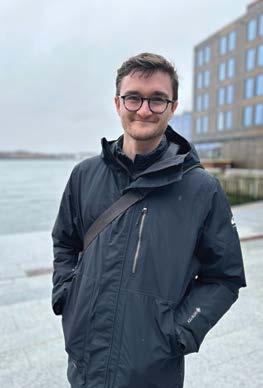
10 A.M. I’m working on a file review while humming Beyoncé’s Texas Hold ’Em, which we’ll sing tonight at The Big Sing. My two co-hosts (wife Rachael Delano (BA’18) and friend Caitlin Bowers) and I rehearsed last night and it’s still in my brain today as I focus on this civil litigation file.
12 P.M. I walk on the Halifax waterfront. It’ll be my only break today, as I head straight from my articling position to the Basement of the Economy Shoe Shop, our Big Sing performance venue. I’m thinking about how music training gave me skills I draw upon now as an aspiring lawyer: the discipline to prepare, creativity to improvise and think on my feet, and public speaking skills.
2 P.M. I’m working on a legal memo regarding recent appellate decisions. I’m fascinated by justice and enjoy the intellectual challenge interpreting and
7:30 P.M. The 250 singers have all chosen one of three parts, lower, middle, or upper, and are grouped on the floor facing us. It’s a challenging arrangement and to keep the mood light I offer this advice: “Sing strong and wrong!” Our goal is creating a welcoming space, not technical perfection.
8:56 P.M. We’re ready to do the final runthrough which we’ll video-record and post on social media and YouTube. I look out at all those expectant faces and their mouths as they open to sing the first line as I lift my hands to cue them.
9:04 P.M. Success! We sounded so good. I see smiling faces all around the room. We all applaud ourselves for pulling it off and bid everyone good night.
Watch the performance at www.youtube.com/c/TheBigSingHFX
DAL MAG SPRING/SUMMER 2024 18
24 HOURS
TOP: Leaders of The Big Sing BOTTOM: Bennet takes a break on the waterfront
PEOPLE

SPOTLIGHT
Last Thanksgiving,
TRAVIS MCDONOUGH
(BScK’94) invited a man living in a tent to dinner. After the meal, McDonough and his wife moved him into the home they share with their three kids. He stayed for three months while they helped him find work and affordable housing.
Now he’s a tax-paying citizen with two jobs. He even volunteers. The story ends well,” says McDonough.
Calculated risk-taking, service to community, and ending well seem to be McDonough’s modus operandi.
A kinesiology grad and licensed chiropractor, McDonough says he fell in love with the science of movement and the human body while at Dal. He’s channeled that into several businesses. The latest is Wellnify.ai. “It’s a digital platform that builds community wellness,” explains McDonough.
McDonough says he lives by the adage that you don’t choose your future, you choose your habits, which determine your future.
“You can’t get people off their phones, so I figured let’s use them to create positive change,” he says.
Recognizing the popularity of video games and apps
like TikTok, McDonough and his business partners— many coming from Kinduct, the performance-based tracking software for athletes he founded, nurtured, then sold—found a way to harness screen addictiveness for good.
“We originally imagined it for young athletes, but realized we also needed to help sedentary kids get healthier,” McDonough says, from Wellnify.ai headquarters—a half basketball court plus workout/ office space in his backyard.
“The greatest gift a parent can give their children is a love of exercise,” McDonough says, adding when that doesn’t happen, Wellnify.ai can step in to help cultivate that love for exercise.
Dalhousie is a partner. Residence students use Wellnify.ai to participate in augmented reality challenges. “It gives a video game-like experience,” McDonough explains, with students in, say, Shirreff Hall performing and counting squats using Wellnify.ai to compete against friends in Howe Hall.
It’s not just about fitness. There is the “body” channel, but also channels for “mind,” offering information on things like the importance of sleep, and “spirit,” focused on mindfulness, meditation and nature. Rewards are built into each channel, such as points earned for spending time in nature, that are collected and redeemed within the app or outside it for prizes.
After selling Kinduct in 2020 to a Silicon Valley tech company that took it global, McDonough paused to consider what was next. His parents died within two months of one another in 2021 and 2022, impacting his momentum and perspective.
His father was Dal alum Peter McDonough (LLB’67). “He would come to Kinduct every day in the early days. His belief in it was my power source.”
His late mother, Alexa McDonough (BA’65, MSW’67, LLD’09), taught him that service is the price you pay for living.
“This chapter in my life is much more about the impact we can have rather than a share price,” McDonough says.—Alison DeLory
DAL MAG SPRING/SUMMER 2024 19
ALISON DELORY “
Travis McDonough at the Wellnify.ai space

WHY I GIVE
"I was overwhelmingly heartened to learn about [Truro Start] and to have the opportunity to endow a scholarship."
When SHIRLEY KING thinks of her parents, she recalls how profoundly they were shaped by their early life experiences in Truro, N.S.
Their families had generational ties to settlers from Scotland and New England and pursued traditional livelihoods in farming, small business, and the rail services in Colchester County,” King says. “It was the norm for everyone to invest in their community through loyal social connections and commitments to the welfare of each other.”
Although King’s parents relocated to the Toronto area after World War II in pursuit of a better life, their connection to Truro remained strong. She remembers summer vacations at the family’s cottage on the nearby Brule Shore serving as consolation for their longing to return to the place they knew as home. Those memories, and that passion, inspired King to think about ways to celebrate her parents’ abiding ties to the community.
“I wanted to honour them in a manner that reflects the strong influence of their Nova Scotia heritage and the powerful benefits of community life and friendships in Truro,” says King. “The town gave them a lifelong sense of place.”
King found a way through Dalhousie’s Truro Start Program. It offers rural students an opportunity to
complete the first year of their chosen degree at Dal’s Truro campus, where they can take advantage of smaller class sizes before transitioning into their subsequent years in Halifax.
Realizing she could help rural students succeed in achieving their academic dreams, King created the George and Ethel King Entrance Scholarship. It provides support to Nova Scotia students entering Truro Start, with preference given to Indigenous students.
“I was overwhelmingly heartened to learn about the program and to have the opportunity to endow a scholarship,” King says.
The appeal of a program like Truro Start for King is not just that it helps put rural students on a path to success. It also allows them to stay close to home. “That seems like an ideal trajectory for building a vibrant community in Truro,” she adds.
King has subsequently made an estate gift to the Truro Start program. She wants to ensure students continue to have the opportunity to develop academic confidence and a sense of place in a university setting that they will carry forward through graduation. More importantly, she hopes that, through the program, they will retain that same sense of belonging to the community that her parents felt all their lives.
“My parents would have been very gratified to know that the community of Truro plays host to this promising generation,” King says.—Mark Campbell
DAL MAG SPRING/SUMMER 2024 20
“ SUPPLIED

INNOVATOR
DR. CRYSTAL SWEENEY (PhD’19) is developing technology to help measure, and ultimately mitigate, carcinogen exposure for workers in high-risk environments.
INNOVATION: Analytical toxicologist Dr. Crystal Sweeney founded PureSpire Biomonitoring Technologies Inc., a startup that aims to produce solutions pivotal in mitigating risks related to occupational carcinogen exposure among firefighters.
PureSpire Biomonitoring Technologies Inc. aims to leverage advancements in biosensor technology to detect and track cancer-causing chemicals, including volatile organic compounds and “forever chemicals.”
Collaborating with Dr. John Frampton, a biomaterials expert, Dr. Sweeney is exploring the development of an adhesive patch for firefighters to wear against their skin that will monitor carcinogens in the body.
FOUNDATION: Canadians are growing accustomed to the hazy skies, irritated eyes, and coughs induced by particles from distant fires. But what about those in the
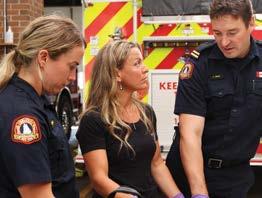
Dr. Sweeney consults with firefighters
midst of the blaze? How severe is the impact for those actively fighting the fires?
Dr. Sweeney, who did both her PhD and a postdoctoral fellowship at Dalhousie, observed the rise in fires across North America with concern. Her focus honed in on the firefighters facing the toxic cocktail of carcinogens in their line of duty.
With the help of the Lab2Market program, Dr. Sweeney was able to interview more than 75 firefighters to do deep research into the firefighting field, allowing her to get more insight into how best to help them stay well.
INSPIRATION: Dr. Sweeney highlights that beyond forest fires, the combustion of modern materials elevates cancer risks for exposed individuals. Studies by the International Association of Fire Fighters (IAFF) establish a direct link between chemical exposure and increased cancer risk. Despite advanced gear and decontamination protocols, occupational cancer remains a significant threat to firefighters.
WHY IT MATTERS: Dr. Sweeney’s efforts gained support from David Perez, a firefighter who successfully battled two rare occupational blood cancers and is currently in remission following an allogeneic stem cell transplant. Perez joined PureSpire’s founding team, driven by a shared commitment to mitigate cancer risks for firefighters.
PureSpire reengaged with Dal Innovates for the Lab2Market Launch program, accelerating their venture with funding, mentorship, and networking opportunities. Driven by the mission to enhance firefighter health and safety, PureSpire aims to bring their products to market swiftly. Their biosensor patch could provide crucial evidence linking workplace exposure to cancer diagnosis, offering firefighters a tool to reduce internal toxicant exposure before cancer develops.—Emily Neil
DAL MAG SPRING/SUMMER 2024 21
NICK PEARCE
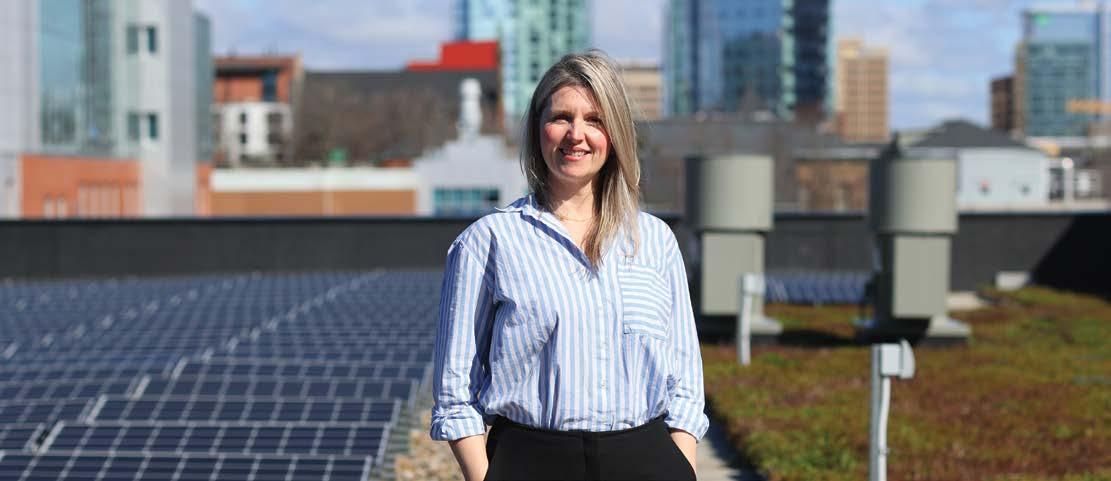
WHY I DO IT
STEPHANIE MACPHEE (BENG'06),
Dal’s executive director of the Office of Sustainability, takes a multifaceted approach to lessening Dal’s impact on the planet.
HER BACKSTORY: Stephanie MacPhee will be the first to share that a career in sustainability was not an obvious choice for her. But of the paths she’s chosen over the course of her career to date, an underlying passion for reducing our impact on the planet has made a subtle yet consistent appearance.
MacPhee studied physics in her undergrad, and originally thought she’d go to medical school. Her father however, an engineer, provided a model for an alternative to that choice. Though he didn’t work in the environmental field, seeing what he did gave MacPhee enough information to see engineering as a possibility. Cue the environmental engineering program at Dal. Her research and subsequent consulting work was in contaminated site engineering for large industrial areas, such as defunct gas stations or chemical plants. It’s not uncommon for contaminants from these sites to seep into the groundwater and impact their neighbouring communities. Part of her work included sampling the water and soil in these areas.
MacPhee speaks excitedly about the experience of returning to campus after her time as a student.
“As a student you’re so focused on your studies that you don’t think about all of the other aspects of the university. There’s a whole other engine—the facilities group, the operations team—who work to heat and cool the campus and make sure the lights are on,” she says. “You begin to realize how important these groups are.”
MacPhee recently explored Dal’s LEED Platinum buildings and features, such as the geothermal field, green roof, solar photovoltaic systems, and cistern that help increase energy efficiency, save water and reduce the carbon footprint of Dal’s campuses. One project that MacPhee is excited to bring to Dal is a Free Store program. The store would see items collected during student move-out times—household goods, kitchenwares and other items in good condition that might otherwise be left behind or end up in a landfill— made available during orientation in the fall. She saw first hand the impact of similar programs and sees the potential in an area like Halifax.
“It’s a program that I have started before and it was very successful. Students were so excited about it and it also hits on the affordability piece in a time where people are strained with their budgets,” says MacPhee.
WHY I DO
"It's
always been important to do something that I feel is meaningful."
While she loved the experiences and opportunities field work provided, it still wasn’t her perfect fit.
MacPhee spent time consulting, first in non-profits and then finally in a university setting. In January, MacPhee accepted her role as the executive director of Dal’s Office of Sustainability.
HIGHLIGHTS: Looking at MacPhee’s portfolio in her new role, there are countless projects for her to dig into, from developing and implementing carbon reduction strategies and university waste reduction and diversion strategies, to student-focused programs and sustainable procurement.
IT: Originally from Nova Scotia, MacPhee is thankful for the opportunity to be back home after 16 years in Ontario and abroad. She commends the work of those who came before her, the expertise of her new colleagues across campus, and the passion of the students that are both studying and championing sustainability on campus.
“I think for me, it’s always been important to do something that I feel is meaningful,” MacPhee says. “We often feel overwhelmed and like the world is crashing down upon us. Eco-grief is a real thing, and you start to wonder if small things matter. Just remember that they do.”—Tanis Trainor
DAL MAG SPRING/SUMMER 2024 22
NICK PEARCE
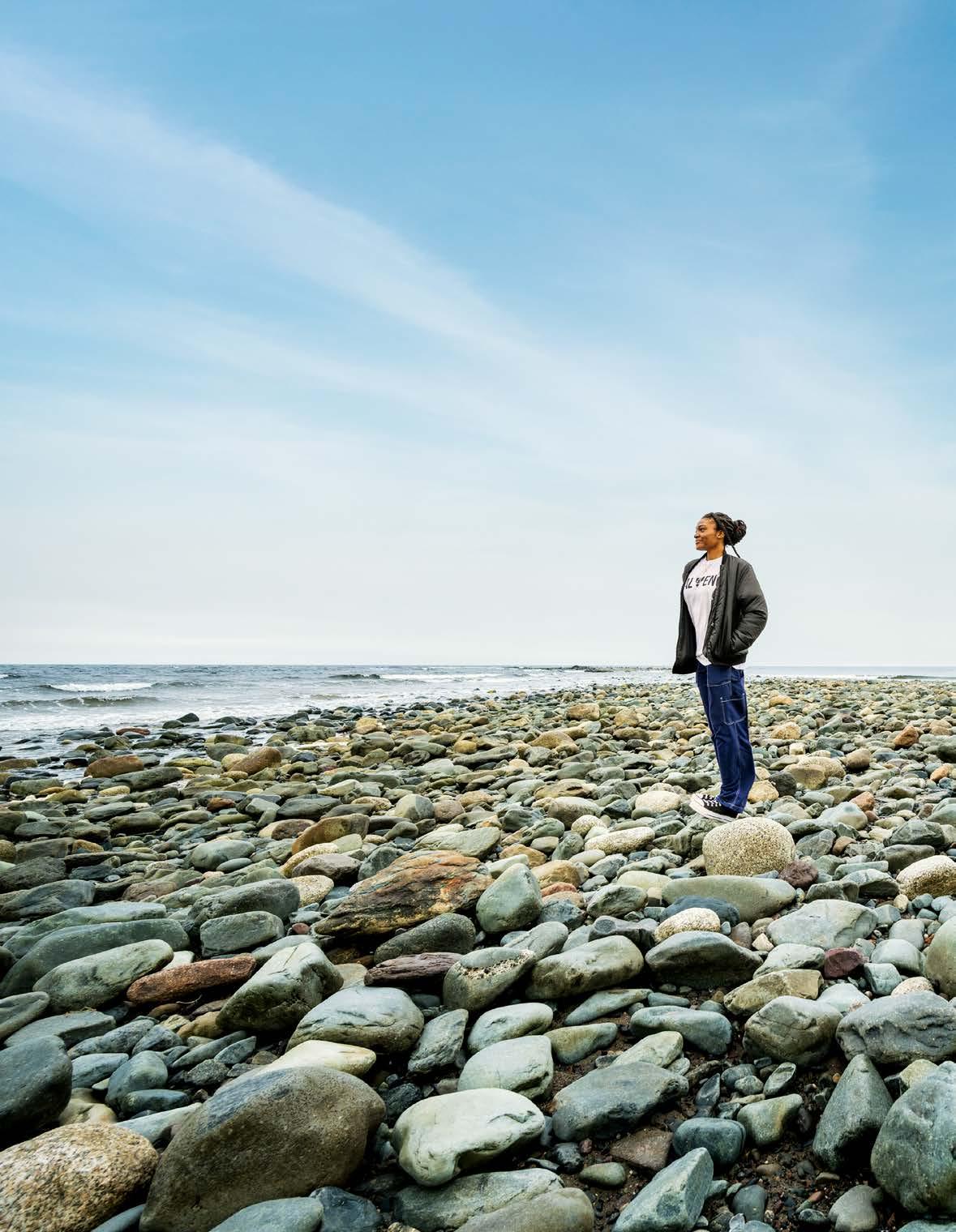
Where ambition meets opportunity
At Dalhousie University, you get the best of all worlds.
Dal offers the best in groundbreaking research with world-changing professors and over 200 programs. You’ll get hands-on experience tackling real-world problems, all while being part of a supportive community in one of the most naturally stunning places in Canada. Are you ready to have it all?
dal.ca/future-students HALIFAX & TRURO, NS
24 DAL MAG SPRING/SUMMER 2024
Worlds of Opportunity
When Dalhousie announced the launch of Bringing Worlds Together, a $750-million campaign for transformational change, it made history with the largest fundraising initiative ever among Atlantic Canadian universities. By inspiring future-ready leaders, engaging in high-impact research, and lifting communities, the university aims to make a better world, too.
By Mark Campbell
NICK PEARCE
Special Feature 25 DAL MAG SPRING/SUMMER 2024
It was a historic announcement.
On April 2, an enthusiastic crowd filled Dal’s McInnes Room for the launch of Bringing Worlds Together—Dalhousie’s campaign for transformational change. With a goal of $750 million, it is the largest fundraising campaign ever among Atlantic Canadian universities. The energy in the room was palpable when Dal’s President, Dr. Kim Brooks, revealed that nearly half of the campaign goal had already been raised. That is more than Dal raised during the university’s previous fundraising campaign, Bold Ambitions.
“For more than 200 years, our extraordinary community of alumni, donors, and partners have enabled Dalhousie to do the extraordinary—to become a national university with global impact,” Dr. Brooks told the crowd. “Today, I’m here to share with you what extraordinary looks like for our third century.”
The vision Dr. Brooks shared is one in which Dal reaches across disciplines, cultures, and organizations to achieve exceptional, far-reaching results that benefit everyone.




DAL MAG SPRING/SUMMER 2024 26
CODY TURNER

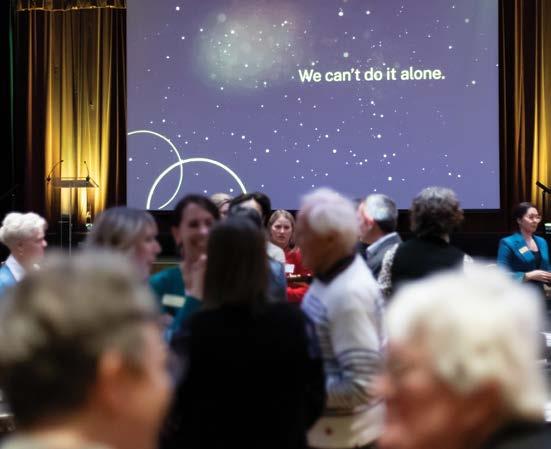
Next-level extraordinary
Bringing Worlds Together builds on the tremendous success and growth Dalhousie is experiencing. As the largest research-intensive university in the region, Dal has become a hub for collaboration, bringing together people and organizations from across Nova Scotia and beyond for research and projects that tackle major issues and seize opportunities. They range from improving health outcomes to strengthening relationships with Nova Scotia’s African Nova Scotian communities.
Bringing Worlds Together has also enabled the university to have an impact in areas such as ocean sustainability, food security, and climate change, which has earned Dalhousie widespread recognition.
“Dalhousie is a place where worlds come together,” Dr. Brooks said. “Where scholarly excellence meets hands-on learning. Where students get to know world-leading researchers in their classes. And where groundbreaking research is helping us achieve a better and more sustainable future that leaves no one behind.”

Bringing Worlds Together creates a strong foundation for Dalhousie to take all this activity to the next level, delivering solutions to pressing societal issues on a larger scale and faster timeline. The campaign’s three pillars highlight how the university will make that happen.
“Inspiring Future-Ready Leaders” creates a clear path for student success. “Engaging in High-Impact Research” aims to solve some of the most complex issues facing humankind. And “Lifting Our Communities” will result in more outcomes that matter provincially and internationally.
“Our ambition for this campaign is to share our ca pacity and talent with the world in a way that profoundly shapes [the world],” Dr. Brooks said. “This isn’t about making Dalhousie better; this is about coming togeth er to bring about a more just and equitable future. It’s about making the world better. And it starts here in Nova Scotia.”

Top: Honorary campaign co-chairs Fred & Elizabeth
Fountain celebrate the launch of Bringing Worlds Together.
Bottom: More than 400 Dal alumni and friends came together in Halifax for the campaign launch.


This is the story of how Dalhousie will achieve that goal by Bringing Worlds Together.


SPRING/SUMMER 2024 27
Left: Dalhousie President Dr. Kim Brooks officially announces the university's largest campaign ever.
CODY TURNER

that exchange data—from space. The Canadian Space Agency backed the company with $1.7 million to build and launch the intelligent nanosatellites as part of a commercial satellite constellation for Canada.
“I can say with confidence it is by far one of the most daring and ambitious undertakings that we have done at Dalhousie,” says Gharagozli. “It cleared a path for a whole new industry to blossom in our region.”
Gharagozli is working to realize that potential through his company, and Dal is helping him in that effort both through partnerships with researchers and access to talent.
“Dal has one of the strongest engineering programs in Atlantic Canada,” Gharagozli says. “It prepares students like me to solve real-world challenges and contribute to economic growth in our region and beyond.”
The goal of Bringing Worlds Together is to expand and enhance programs, facilities, and resources to help students like Gharagozli develop entrepreneurial and innovative mindsets to succeed. “The more we can ensure that Arad and the thousands of Dalhousie students like him are future ready, the more we can enable them to make the world a better place for everyone,” says Dr. John Newhook (DEng'86, BEng'89, MASc'93, PhD'97), dean of the Faculty of Engineering.



At Dalhousie, we believe we have a greater purpose, to be a force for positive change in the world. But we can’t do it alone.
Climate change, disease, hunger, and repression won’t wait. We believe the solutions won’t be found by any one person, discipline, or institution. If we’re going to make change happen, we need to make it happen together. We’re calling for innovation and transformation. To improve health outcomes, revitalize our climate, and sustain our oceans. With students at the centre, we’re bringing together the changemakers: the inspiring innovators, dedicated researchers, and passionate benefactors. Together we can achieve a more just and sustainable society.
Dalhousie’s East Coast home is a hub for global change. We’re bringing together art and science, conservation and innovation, advocacy and creativity.
We’re lifting our communities higher, expanding the impact of our research, and inspiring the next generation of leaders to face the future head-on.
Together, we are committed to solving the problems of our time —not making peace with them.
It starts with extraordinary partnerships, and ends with extraordinary solutions. If we’re going to change the world, we can’t be worlds apart.
That’s why at Dalhousie, we’re bringing worlds together. Join us.
DANIEL ABRIEL
Arad Gharagozli says Dal prepares students like him to solve real-world challenges
29 DAL MAG SPRING/SUMMER 2024


Engaging in HighImpact Research








As Dalhousie’s Vice-President Research and Innovation, Dr. Alice Aiken (BScPT'94) knows the university’s researchers are engaging in work that has the potential to be transformative on a large scale. Through Bringing Worlds Together, both Nova Scotia and the world will soon experience the benefits of that work in profound ways.
“We have researchers who have a steadfast commitment to working together to find solutions to the biggest challenges of our time,” says Dr. Aiken. “We have a vibrant and uniquely collaborative research environment that inspires outcomes that matter. As a result, we have become a research powerhouse. This campaign will enable us to accelerate this vital work and the results that we are able to achieve.”
Big ambitions, bigger impact













































Dr. Aiken says that Bringing Worlds Together will accelerate research efforts in six key areas—sustaining the ocean, developing climate technology solutions, improving health outcomes, increasing food security, leading social innovation, and advancing artificial intelligence (AI) and digital innovation. These are areas that both pose significant threats and offer unparalleled opportunities. They are also areas where Dalhousie has developed extensive expertise and achieved notable breakthroughs.




















































“Impact is important for us in all the work we do,” Dr. Aiken says. “We always ask ourselves, ‘How can this have an impact globally?’ Bringing Worlds Together enhances our ability to answer that question. It helps create a stronger, more vibrant collaborative research environment where we are not just imagining a better future; we are achieving it.”


















Energized by possibilities














Dr. Chris Burns (MSc’11, PhD’15) is helping to achieve that future as the founder and CEO of NOVONIX, a sustainable battery technology company that spun out of research at Dalhousie.
Originally from the United States, Dr. Burns came to Dalhousie in 2009 to study under Dr. Jeff Dahn (BSc'78), a globally recognized leader in lithium-ion battery research. Now supported by Tesla, Dr. Dahn and his team have made significant advancements in improving the affordability, durability, and lifespan of this technology, which is essential for devices ranging from cellphones to electric vehicles. Reflecting on his time in Dr. Dahn’s laboratory, Dr. Burns was inspired by the potential for societal impact: “Working with Jeff, I recognized the chance to effect real change that resonates with people,” he says.
DAL MAG SPRING/SUMMER 2024 30
As part of his PhD work, Dr. Burns contributed to the development of materials aimed at prolonging battery life. With NOVONIX, he has leveraged that experience to drive innovation in manufacturing synthetic graphite—a vital component of lithium-ion batteries— through a cleaner process. This method could decrease the global warming potential of the process by as much as 60 per cent relative to conventional manufacturing methods employed in China, which currently supplies over 90 per cent of the world’s demand. Through NOVONIX, which has operations in Nova Scotia and Tennessee, Dr. Burns is bringing that technology to market, not only with lower environmental impacts, but also with longer life and higher energy efficiency. This innovation has attracted significant attention from industry leaders, resulting in investments exceeding $400M from Phillips 66, LG Energy Solution, the US Department of Energy, and others.
“There are very few companies in our space outside of Asia,” Dr. Burns says. “Other people saw risk where we saw opportunity.”
Fueling climate tech research
Bringing Worlds Together will raise funds to build a new Physical Sciences Centre, creating more opportunities for game-changing research, and potentially more spinoffs like NOVONIX. Equipped with state-of-theart technology, the facility will be a hub for climate technology research that accelerates sustainable solutions. It will also enable Dalhousie to increase research capacity, create more opportunities for postdoctoral studies in climate technology, and offer students more access to innovative thinking on climate issues.
“NOVONIX is just one example of the kind of global effect our future-ready leaders are able to bring to market when immersed in high-impact research during their time at Dal,” says Dr. Chuck Macdonald (BSc'94, PhD'98), dean of the Faculty of Science.
“This is what enables Dalhousie, as an institution and a community, to lift our communities.”
“

I RECOGNIZED THE CHANCE TO EFFECT REAL CHANGE THAT RESONATES WITH PEOPLE.
DR. CHRIS BURNS (MSC’11, PHD’15) FOUNDER AND CEO, NOVONIX
Chris
Burns is drawing on his Dal experience to bring a better lithium-ion battery technology to market
DAL MAG SPRING/SUMMER 2024 31 CODY TURNE , PROVIDED










































Lifting our Communities

HACCESS TO REGULAR DENTAL CARE HELPS PEOPLE IMPROVE THEIR MENTAL AND PHYSICAL HEALTH.






































































































ow do you honour a legacy of lifting the intellectual, cultural, and economic vitality of communities across Nova Scotia and beyond that spans more than 200 years? For Dr. Brooks, the answer is clear: you amplify it.
“Serving communities is in our DNA,” says Dr. Brooks. “Supporting our communities the way they have supported us means we grow stronger together. Bringing Worlds Together will make it possible for us to do even more for our communities. We see opportunities to combine different knowledge and skills in innovative ways that help communities address the challenges they need to solve and make real progress on the goals they want to achieve.”
Inspiring smiles
Dalhousie Faculty of Dentistry students, faculty, and community partners know what can be accomplished by bringing worlds together. They are working to provide free oral care to community members who otherwise might not be able to afford it through three permanent outreach clinics, one of which is located at the North End Community Health Centre (NECHC) in Halifax.
Anna Quon (BA’89) is one of many community members who have received care through the NECHC dental clinic. The novelist and poet laureate of Halifax says that when she was a child, her teeth were a small sign there was something special about her. “White, bright, and nearly almost perfect is what my dentist said,” she recalls. “I never had a cavity. I didn’t need braces.”
By age 20, Quon had her first cavity and the following year, she chipped a tooth. In the years that followed, her oral health was further impacted both by teeth grinding in her sleep and by psychiatric experiences. Cost was another factor, with Quon only able to afford sporadic
DAL MAG SPRING/SUMMER 2024 32
ANNA QUON (BA’89)
“
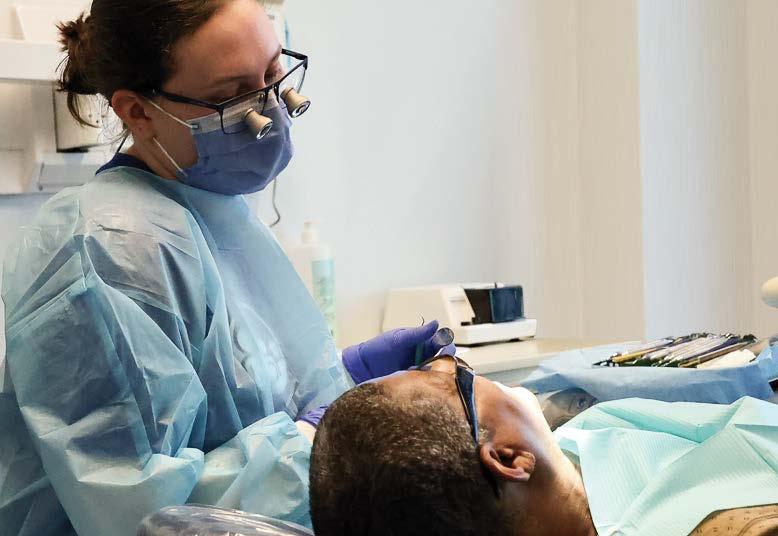






care for 30 years until she connected with the clinic. Realizing how lucky she was to have access to lowbarrier dental care, Quon featured the NECHC dental clinic in Me and My Teeth, a short film that highlights the parallels between dental and mental health.
“Access to regular dental care helps people not only improve their mental and physical health, but in a society that judges us on appearance, also helps us feel better about ourselves, have access to jobs and other opportunities, and smile more,” she says.
Limitless possibilities
Dr. Ben Davis, dean of the Faculty of Dentistry, says Bringing Worlds Together will help fund a new community clinic that will not only expand access to oral care among underserved populations across Nova Scotia, but also to the legal and social work services offered by Dalhousie’s existing clinics. It will also enhance the university’s ability to graduate more highly trained professionals that meet industry demands for talent and grow the economy. And it will enable Dalhousie to dedicate more initiatives, professors, and researchers to helping new entrepreneurs transform innovative ideas into successful businesses.
For Dalhousie’s Vice-Provost of Equity and Inclusion, Dr. Theresa Rajack-Talley, Bringing Worlds Together also creates opportunities for Dalhousie to address historic wrongdoings and become a more inclusive and equitable place for everyone. That means partnering with equity-denied and underrepresented communities on outreach programs to create increased pathways to higher education. “We know that much of what we achieve in advancing communities here at home will have application elsewhere in the world,” says Dr. Rajack-Talley.
Bringing Worlds Together
Having made history with the announcement of Bringing Worlds Together on April 2, Dr. Brooks and Dalhousie are focused on what’s next. Already, the campaign has passed the halfway mark, the momentum is there to raise the rest. That will allow the university to not just imagine a better future, but also make it happen.
“Our ambitions for this campaign are to work together to grow exponentially and meaningfully change the world,” she says.
Achieving that change will take extraordinary effort, but Dalhousie is ready to rise to the challenge. The university continues to inspire future-ready leaders, engage in high-impact research, and lift communities in ways that are transformative. And it continues to enjoy the support of extraordinary partners and donors who see this campaign as the best possible opportunity for addressing challenges and realizing possibilities, and doing that now.
“If we have learned anything in the last 200 years, it is that we can only create meaningful paths forward when we work together,” Dr. Brooks says.
“That’s why we are Bringing Worlds Together. We are seeking partners who want to drive meaningful and lasting change that leaves no one behind, who want to accelerate talent and create impact with distinction, and who know that community matters. We can make a better world. And we can do it when we Bring Worlds Together.”





DAL MAG SPRING/SUMMER 2024 33 NICK PEARCE, DANIEL ABRIEL
Left: Faculty of Dentistry students, faculty, and community partners are making oral care more accessible. Right: The Dal community joins in the festivities at the Halifax Pride Festival.
the gap Bridging
Dalhousie researchers have faced challenges bringing ideas for life-changing medicines out of the lab to patients’ bedsides. A new biomanufacturing facility envisioned by the Faculty of Medicine will change that.
By Mark Campbell


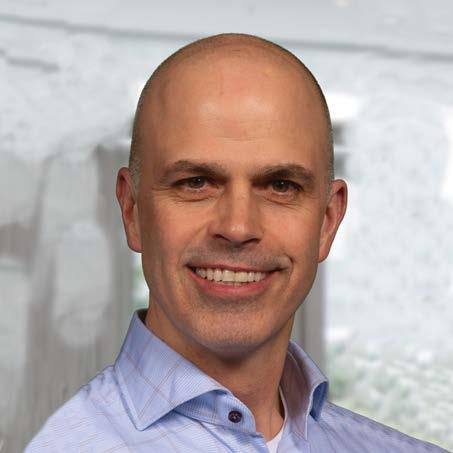

Acure for cancer. It’s long been a holy grail for researchers like Dr. Jeanette Boudreau. But the associate professor with Dalhousie’s departments of Microbiology & Immunology and Pathology may be on the verge of better treatments using one of the most powerful weapons we have in this ongoing fight: the human immune system.
Dr. Boudreau is looking at the potential of using white blood cells, known as natural killers, as immunotherapies for cancer. Her research into these cells, which have proven effective in treating leukemia, shows promise. But Dr. Boudreau is facing a significant challenge. There are no biomanufacturing facilities in Atlantic Canada that can help her take this innovative idea from the lab to patients’ bedsides.
“It’s not just the ability to transform living organisms like white blood cells into vaccines and therapies that is missing here,” Dr. Boudreau explains. “It’s the ability to do what we call preclinical testing—figuring out dosing and toxicity—so these therapies are ready for prime time. Without a facility in place that can do all that, you either have to convince somebody else to pick up your discovery and run with it or you shelve it.” Thanks to Dalhousie’s Faculty of Medicine, that facility could soon be a reality. Supported by the fundraising efforts of the Bringing Worlds Together campaign, the Faculty is collaborating with Nova Scotia Health, the IWK Health Centre, the Canadian Center for Vaccinology (CCfV), and Life Sciences Nova Scotia to bring the facility, to be called GMP BioLabs East, to life. This innovative new undertaking will offer researchers like Dr. Boudreau access to biomanufacturing































DAL MAG SPRING/SUMMER 2024 34
Clockwise from top: Dr. Mahmoud Elsawy, Dr. Jeanette Boudreau, Sean Awalt, Dr. David R. Anderson
CLOCKWISE FROM TOP: MARNIE GILLIS, CONTRIBUTED
[GMP BioLabs] is really going to put Atlantic Canada on the cutting edge in terms of making new treatments available.
—Dr. David R. Anderson
infrastructure, processes, and personnel that will help them turn scientific discoveries into life-changing medicines.
“We have great discovery research taking place at Dalhousie and across Atlantic Canada,” says Dr. David R. Anderson (MD'83), dean of the Faculty of Medicine. “What we have not had is a pipeline—a good manufacturing practice facility—for our researchers to translate their discoveries into drugs that can then be used in clinical trials. GMP BioLabs East fills that gap by creating an ecosystem for medical innovation in our region.”
Researchers in the Faculty of Medicine, such as the CCfV teams led by Drs. Scott Halperin and Joanne Langley (MD'84, PGM'85), first envisioned the biomanufacturing facility in 2021. In 2022, their vision came into greater focus when the Government of Canada announced $2 billion to support such infrastructure across the country. The scarcity of this infrastructure contributed to the challenges Canada faced both in commercializing and securing vaccines during the COVID-19 pandemic. Since then, Dal researchers have been building the partnerships necessary to bring this facility to life.
“The pandemic taught us that by prioritizing collaboration, industry partnerships, specialized facilities, and skilled personnel, we could shorten the 15year innovation pipeline significantly,” Dr. Anderson says. “That’s what GMP BioLabs is all about. It enables us to accelerate the translation of groundbreaking scientific research into health solutions that make a difference now.”
The health solutions that Dalhousie Faculty of Medicine researchers envision
range from vaccines that treat influenza to ways to ramp up or calm the immune system to fight infections. But before GMP BioLabs East can run with new ideas, it will need to demonstrate that it is capable of producing the same high-quality biomaterials that other facilities create.
Enter Dr. Mahmoud Elsawy, an assistant professor and a hematologist with the Department of Medicine’s Division of Hematology. Like Dr. Boudreau, Dr. Elsawy is interested in the potential of the immune system to cure cancer. His weapon is chimeric antigen receptor (CAR) T-cell therapy, a highly sophisticated and effective approach that takes patients’ white blood cells, known as T-cells, and programs them to fight blood cancer. Although he is seeing impressive outcomes among his patients, Dr. Elsawy has to send their T-cells to the United States for reprogramming, which is not only costly, but also creates significant wait times in treating a disease where time is of the essence. He says the new facility will essentially get up to speed by reprogramming these cells faster, and that will make a significant difference for his patients.
“Currently, it takes about three to four weeks to get these therapies back,” says Dr. Elsawy, who led the introduction of CAR T-cell therapy in Nova Scotia. “Meanwhile, those cancers are growing. With GMP BioLabs East, we could get that turnaround down to two weeks or less and a much lower cost for the health-care system. That would help make a more affordable, effective, and timely made-in-Nova-Scotia CAR T-cell therapy available. It would also create opportunities to explore how we can use CAR T-cell therapy to treat other cancers, such as solid tumours.”
Once it is up to speed, GMP BioLabs East will initially focus on supporting the research of Dalhousie’s Infection, Immunity, Inflammation, and Vaccinology (I3V) research team, which is making significant contributions to the prevention and treatment of infectious diseases, chronic inflammation, and cancer. But the ultimate goal is to make its biomanufacturing and testing expertise available to researchers and life sciences organizations across Atlantic Canada. Sean Awalt, CEO of Life Sciences Nova Scotia, an industry association dedicated to helping startups succeed, says that will be game changing for the industry.
“Right now, companies developing innovative biotherapeutics have to look outside the region to commercialize them,” Awalt says. “They must access larger markets like Montreal or Boston to continue developing their product, which is an unfortunate loss for Nova Scotia. This facility is going to enable entrepreneurs and companies to stay here and develop their innovations. It will also create opportunities for us to develop and retain biomanufacturing talent and collaborate with global biopharmaceutical companies. That’s not just going to help our life sciences sector grow, but also our economy.”
Dr. Anderson agrees that GMP BioLabs East is going to be transformative for the region and for patients when it opens its doors.
“It is really going to put Atlantic Canada on the cutting edge in terms of making new treatments available,” he says. “That means we won’t have to wait in line or be dependent on another country or region to secure our share in the midst of another crisis like COVID-19. We will have those treatments available here for us when we need them.”
DAL MAG SPRING/SUMMER 2024 35
– Carmen Moir, Class of 1950

Meet Carmen Moir, resident at Parkland at the Lakes who graduated from Dalhousie University in 1950. Carmen has been a resident at Parkland for 9 years and is involved in the community by sparking conversations among residents and inviting interesting guest speakers. When asked what kind of advice he would give to a new graduate coming out of Dalhousie, he says: “Don’t be afraid to try new things, just do it” as that was and still is his big motto in life.
DAL MAG SPRING/SUMMER 2024
“ ”
Want to learn about Parkland?
a personalized
at any of our communities.
Nova Scotia | New Brunswick | Ontario
I wanted to try everything
Book
tour
experienceparkland.com
Learn more about Carmen’s life at Dalhousie and at Parkland, visit our website experienceparkland.com/carmen
STANDING UP FOR THE WORLD
Generations of Dalhousie’s Rhodes Scholars are a force for good
By Ryan McNutt
When SARAH HARDING (LLB’89) arrived at Dalhousie the first time, as a law student, she was joining a community reeling from the devastating 1985 Weldon Law Building fire. Most of the school’s usual space was unusable, forcing everyone into close quarters for work and study.
“I don’t know if it was because of that, or maybe it’s just deep in the school’s nature, but I found such a strong and amazing community, full of smart, interesting, and supportive peers and teachers,” says Prof. Harding. “It was just a formative time for me.”
As she was nearing graduation, one of those teachers suggested she apply for a Rhodes Scholarship. The thought had never crossed her mind; she already had a law firm job lined up in Toronto after graduation. But months later, there she was, flying off to the United Kingdom to begin advanced legal studies at one of the world’s oldest and most renowned universities.
“The Rhodes definitely set me off on a path in multiple ways,” she says. “I started thinking at Oxford that I might want to be an academic; I just thought I was going to be a lawyer before that. And I met my husband at Oxford. He was also a Rhodes Scholar, and an American, and that set me on a different path as well.”

37 DAL MAG SPRING/SUMMER 2024 STOCK
She would go on to spend nearly three decades as a law professor and associate dean at Chicago-Kent College of Law before coming out of retirement in 2023 to return to Dalhousie as dean of the Schulich School of Law. She says she loves being back among students and getting to connect with colleagues new and familiar, and that while the law school has changed in many ways, some things remain the same—particularly, the “Weldon tradition” of service that defines the school’s character.
“That idea of unselfish public service permeates the culture,” says Prof. Harding. “And that idea of leadership in the service of others, it’s there in the Rhodes as well—the whole mantra of ‘fighting the good fight.’”
Most people don’t know the mantras of scholarships. Heck, most scholarships don’t even have mantras. But few scholarships are quite like the Rhodes.
Established at the turn of the 20th century through the will of British colonial magnate Cecil Rhodes, the Rhodes Trust has allowed nearly 8,000 young people from around the world the life-changing opportunity to study at the University of Oxford for up to three
years, all expenses paid. The scholarship recognizes not only academic achievement but character, extracurricular involvement, commitment to social good—that “fighting the good fight,” now expressed by the Rhodes Trust as “standing up for the world.” Open to scholars across disciplines, the Rhodes has immense prestige and renown partly from being the world’s oldest international scholarship program, but largely through the success of its alumni, including individuals like Bill Clinton, Kris Kristofferson, Chrystia Freeland, and Bob Rae, to name a few.
As you’d expect, large numbers of Rhodes Scholars have come from universities like Harvard, Yale, Princeton, McGill. But right in their midst is Dalhousie, ranking among the top 10 schools in North America for producing Rhodes Scholars. Dal students have been selected as Rhodes Scholars 94 times and counting—a rather oversized portion of the more than 1,000 Canadians selected for the honour since 1904. Their ranks have included premiers and politicians, renowned professors and professionals—a living legacy of contributions to Canada and the world. Why is Dal so well represented among Rhodes alumni? One reason is that Dalhousie has been around for the scholarship’s entire 120-year history. Another is that the Maritime provinces are allocated two of Canada’s 11 Rhodes
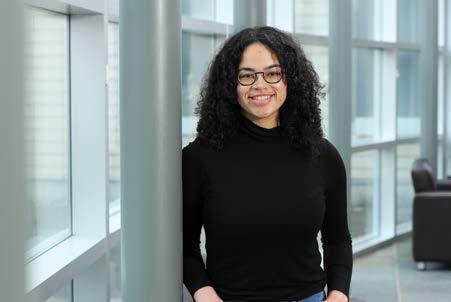
Scholarships each year, so it makes sense that Dalhousie, the region’s largest university, would do well in producing Rhodes candidates. But when you talk to alumni who’ve succeeded in the Rhodes application and interview process, they also talk about how the education they received at Dalhousie aligned with the values at the forefront of the Rhodes criteria.
“Rhodes is about being a force for good, and Dalhousie set me on the right path to explore and embody that ideal,” says past recipient CAROL-ANN BROWN (BA’97).
“Dal provided excellent teaching, access to a plethora of activities outside of academics, and the space to support others.”
Brown, president of the global sustainability consulting firm Delphi, says her Rhodes experience accelerated her capacities to be a force for change. “The wonderful experience I had at Dalhousie was foundational to being able to absorb what Oxford had to offer—and to the belief that I could make a difference in the world.”
AUDRI MUKHOPADHYAY (BA’95) likens the Oxford opportunity to being given a ticket to an intellectual theme park. “You have Disney for kids, Las Vegas for gamblers, and Oxford for academics and scholarship,” he says. “It’s just this awesome place full of little ‘ah-ha’ moments everywhere.”
Mukhopadhyay subsequently pursued a career as a diplomat with Global Affairs
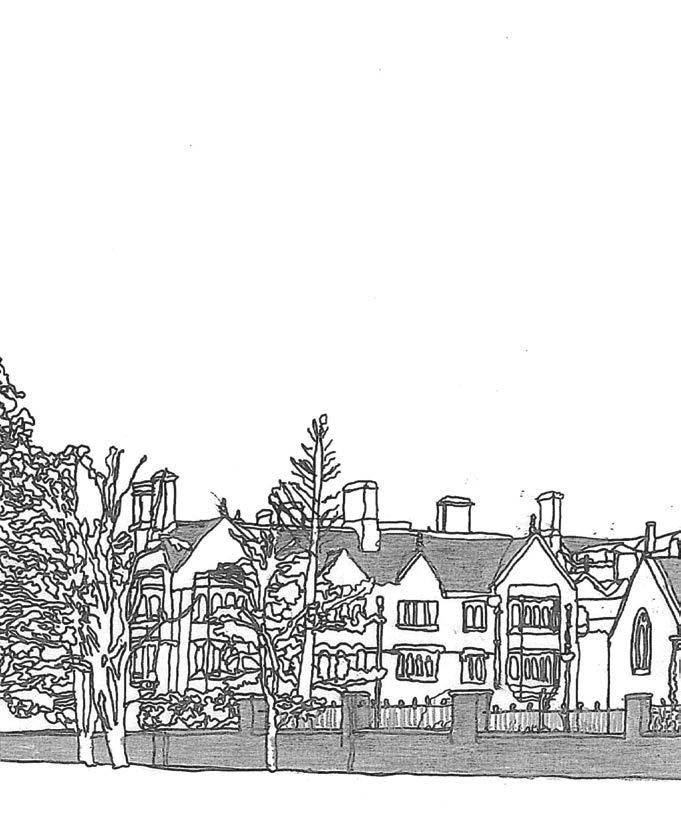
DAL MAG SPRING/SUMMER 2024 38
STOCK, NICK PEARCE
Sierra Sparks
The Rhodes DEFINITELY set me off on a path in multiple ways.
—Sarah Harding (LLB’89)

Canada and is currently director for Southeast Asia and Oceania. But he’s remained engaged with some of the Rhodes connections he made through and after Oxford, like many Rhodes alumni tend to do. “There are lots of interesting people in a variety of fields,” he says of the Rhodes community. “You can gain insights into disparate fields, within a culture of curiosity, of exploration.”
GRAHAM FLACK’S (BA’88, LLB’93) Rhodes experience also led him toward public service. Recently retired after a distinguished 30-year career with the federal government, including serving as deputy minister across multiple portfolios (most recently Secretary of the Treasury Board), he recalls how the college-based approach, immersive setting, and intense focus of his studies at Oxford shaped his experience there and some of how he’s approached problem-solving in his public-service career. “There isn’t always ‘examinable’ material, so you have to draw on a range of sources,” he says, “and it’s up to you to identify what they are and synthesize them in a way that’s coherent.”
Another aspect of the Rhodes experience that still resonates with Flack today is being among a global community of scholars at key moments in history. “When I was there, it was when the Berlin Wall came down,” he recalls. “I was doing a course on Eastern European politics with one of the leading experts on the topic and literally his entire worldview was changing over the 10 weeks of the course. So much of the currency of the place was the issues of the day.”
Of course, even as history is happening around you, studying at the University of Oxford is an historic experience in and of itself.
“We think of Dalhousie as an old school, and then you look at England and parts of Europe and you’re talking hundreds and hundreds and hundreds of years,” says GEORGE COOPER (BSC’62, LLB’65, LLD’04). Cooper was a Rhodes Scholar in the mid-1960s and attended University College—one of the more than 30 individual colleges that make up the University of Oxford. “You’re walking through the halls of the school [Percy] Shelley was thrown out of. Stephen Hawking went there, C.S. Lewis, Bill Clinton later on.”
Cooper is a second-generation Rhodes Scholar; his father was also one, and his grandfather grew up in England not far from Oxford. Cooper’s contributions to Dalhousie have been legion—as an alum,

39 DAL MAG SPRING/SUMMER 2024

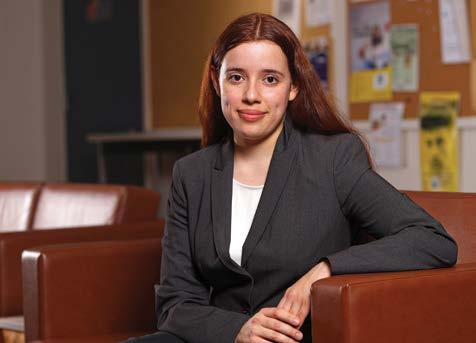
a donor, board member, managing trustee of the Killam Trusts, and as president of the University of King’s College—and he draws a link between that drive to give back to higher education and his Rhodes experience.
“The purpose stated in Mr. Rhodes’s will for this scholarship was to try and bring along people who are interested in making some aspect of public life part of their career,” he says. “And the way he framed it was for men—it was men in those days—who esteem as their highest calling the performance of public duty. He didn’t necessarily mean electoral politics, but also working in the civil service, in a university, whatever else might represent a public good. So that really stuck with me as being something that I ought to do.”
Today, the criteria to become a Rhodes Scholar are still founded in same principles that were in place 120 years ago, but the expression and application of them has changed a great deal. As Cooper indicates, women weren’t accepted as Rhodes Scholars for much of the scholarship’s history; that only changed in 1977. Though always open to individuals of different racial backgrounds, the scholarship’s lack of diversity over the years has been controversial, especially in the era of apartheid South Africa when applicants from that country were restricted to select white-only private secondary schools. And, more broadly, the scholarship has had to struggle to escape the shadow of its founder and namesake, whose views on race and empire not only aligned with but helped fuel the colonial enterprise of his era.
All this is to say that someone like SIERRA SPARKS (BENG'21)—an African Nova Scotian Engineering graduate—might not be who Cecil Rhodes imagined when he first thought up a global scholarship program. But she embodies what the Rhodes has become today, through its current students and more recent alumni—a more inclusive, more representative group of scholars with a broader perspective on what it means to build capacity for the public good.
“You’re part of this group of about 100 people each year, all from different countries, and it’s such a cool experience to meet people from places I’ve never been,” says Sparks, who is currently in her third year of her doctoral degree in biomedical engineering. “It’s been so enriching.”
Sparks has gotten to travel across Europe, dive deeper into her research into risk indicators for Alzheimer’s disease, and even got to take part in the Rhodes’s 120th anniversary celebrations last year, in which hundreds of former scholars made their way back to Oxford.
“It’s honestly been much more of a social experience than I was expecting, those connections. It’s been great meeting so many people. There’s just always something going on.”
Though a Rhodes Scholarship opens up a world of connection and possibility, a number of scholars—just like Schulich Law Dean Sarah Harding—eventually find their way back to the university that launched them toward Oxford in the first place.
Some have become notable Dal faculty members, including Law prof DR. ARTHUR
FOOTE (LLB’54), classicist JAMES DOULL (BA’39), and Physics chair DR. R. H. MARCH (MSC’60). Others, like PRESIDENT HENRY HICKS (BSC’37), have taken on prominent administrative roles. GUY MACLEAN (BA’51, MA’53), who was dean of both Graduate Studies and Arts & Sciences before becoming vice-president academic & research, is another example—and his counsel and guidance shaped DR. DENIS STAIR'S (BA'61) decision to pursue his own Rhodes scholarship.
“He really encouraged me to apply, though I expected nothing of it,” says Dr. Stairs, who would go on to become a renowned political scientist at Dalhousie specializing in Canadian foreign policy and defence— and served as vice-president academic & research, just like Dr. MacLean before him.
“I didn’t necessarily expect to stay at Dalhousie either,” adds Dr. Stairs, but he says Dr. MacLean’s continued support was part of making him feel welcome back in Halifax.
“He was very supportive of younger people who he thought might be of some use, and I simply found myself enjoying it very much, especially working with students.”
For DR. PAUL MANNING (BSC’13), the first Rhodes Scholar from the Faculty of Agriculture in Truro, the journey back to campus was a little bit about family and a lot of good fortune—the opportunity to live in and give back to the community, and school, that helped shape his own path.
“I really care deeply about the success of this campus and the students here,” says Dr. Manning, an assistant professor in the Department of Plant, Food, and
DAL MAG SPRING/SUMMER 2024 40
STOCK, NICK PEARCE
Diana Adamo
“ I’m excited for the OPPORTUNITY to learn more and really be pushed to question what I know and how I know it.”
—Diana Adamo (BSc’24)
Environmental Science who studies insects and their importance to agricultural ecosystems. “It’s an important personal connection for me—as an alum, you want to see your alma mater succeed. It continues to be a true privilege and pleasure to contribute to research and teaching here.”
DR. ANDREW LYNK (MD’82), department chair and chief of pediatrics at Dalhousie and IWK Health, took a longer path back to Dalhousie. He credits his Rhodes experience with opening his eyes to the world, sending him off to work in famine relief in Ethiopia before returning to Nova Scotia to serve Cape Breton as a pediatrician for over 25 years. Since returning to Dal and to Halifax in 2016, he’s embodied another Rhodes trend: connecting with newer scholars to offer his best advice and counsel from his own Rhodes experience.
“The world we live in has a lot of existential challenges right now, lots of threats and opportunities, and more than ever we need strong ethical leadership,” says Dr. Lynk. “So when you run into young folks—be they accomplished pediatric residents or medical students, or people who are applying for or have received a Rhodes Scholarship—these are the leaders of tomorrow. If I can use the privilege and opportunity I’ve had and help mentor these accomplished young folks who are going to help shape and change that world, that’s what I need to do.”
When DIANA ADAMO (BSC’24) was announced as Dalhousie’s 94th Rhodes Scholar last year, Dr. Lynk reached out to congratulate her and offer any advice he could. So, too, did Sierra Sparks, along with several other current and past scholars. Their counsel has been welcome, given that
Adamo—who has never travelled outside of Canada before—is about to embark on a journey unlike anything she’s ever experienced before.
“I just got thrown into everything and didn’t really have much time to think,” she says, referring to the flurry of activity that comes from not only applying and interviewing for the Rhodes, but the process and paperwork necessary once you’re successful. “Now I’m just realizing how exciting it’s going to be. I’ve been looking into my future research, I’ve gotten my
first acceptance letter to one of the Oxford colleges, and now I’m just trying to enjoy it while also focusing on completing the term.”
Some Rhodes Scholars come from great privilege, but for Adamo—who grew up in poverty, witnessing domestic abuse—opportunities like her Dalhousie entrance scholarship, and now her Rhodes Scholarship, are truly life-changing. They empower her drive to understand how societies and health-care systems can better support people with the sorts of neurodevelopmental disorders her family has struggled with. They make the fight, the effort to stand up for others, a little more achievable.
“I’m excited for the opportunity to learn more and really be pushed to question what I know and how I know it,” she says. “It’s about a new perspective, and I’m eager to dive deep into that critical analysis space of my academic career and really grow as a thinker and a researcher.”

DAL MAG SPRING/SUMMER 2024 41 C M Y CM MY CY CMY K 1 LN PRINT AD Dal
Alumni May 2024 copy.pdf 1 2024-05-07 9:33 AM
GIMME SHELTER
THE SOLUTION TO CANADA'S HOUSING CRISIS IS NEITHER QUICK NOR SIMPLE
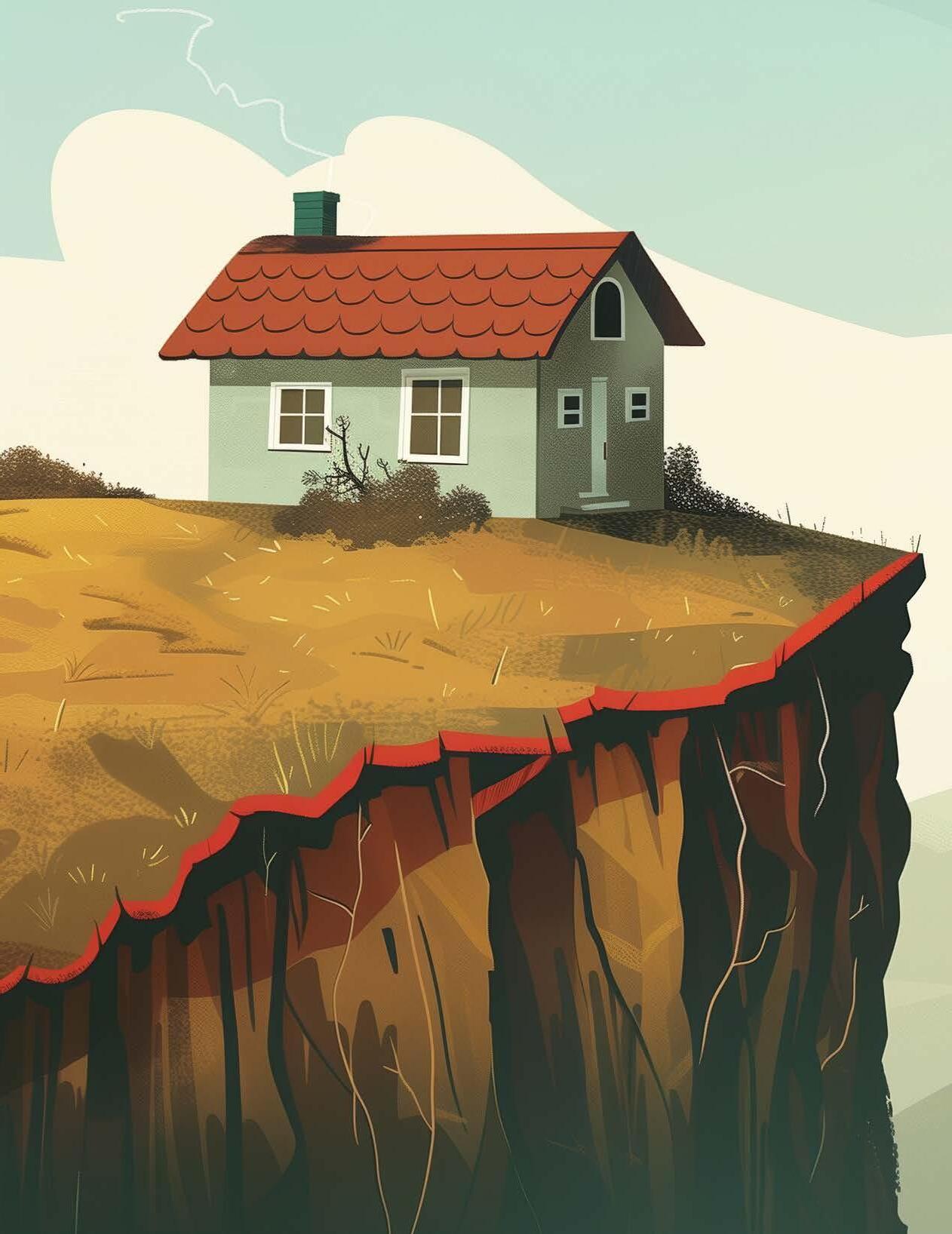 BY MATT REEDER
BY MATT REEDER
DAL MAG SPRING/SUMMER 2024 42
STOCK

Canada needs more homes—and fast.
Figures released by the Canadian Mortgage and Housing Corporation (CMHC) last fall show Canada needs to create an additional 3.5 million units in the next six years on top of what’s already being produced annually to restore housing affordability in the face of a rapidly expanding population. That’s 5.2 million units total.
Trouble is, housing takes time to build, especially in the face of substantial economic headwinds. Shortages of skilled trades, elevated interest rates, supply chain disruptions, and other factors are adding up to make it harder for developers, builders, and non-market housing organizations to meet ballooning demand.
Then there’s the decades-long disinvestment in social and community housing to contend with. As home prices and rents soar to historic new heights in cities and towns of all sizes across the country, affordable options are harder and harder to come by for those who need them most.
“In many ways, the chickens are coming home to roost,” says Dr. Jill Grant, a planning expert and professor emeritus in Dal’s School of Planning. “From the 1980s on, really, the federal government stopped funding much in the way of public housing, leaving that to the provinces. And then the provinces gradually cut back on it as well trying to trim their budgets.”
The result has been an influx of private development. In Nova Scotia, for instance, nearly all new housing created over the past 30 years has come from privatesector developers, says Kelvin Ndoro, a senior analyst with CMHC. Similar patterns can be seen in other provinces.
Little of this development ends up being affordable to buy or rent.
Dr. Jeff Karabanow, a professor in the School of Social Work, also sees a shift in the types of housing attainable to people in different income brackets. As housing that was once accessible to middle-class populations—say, buying a single-family home—becomes less so, they begin exploring rentals and other housing stock once more readily available to students (see sidebar), seniors, and other lower-income individuals. In turn, those individuals are increasingly pushed out of market housing altogether, some ending up in precarious situations or even the streets when they can’t find social or community housing.
“Hence why there is a real need to have some housing stock that sits outside of that market economy,” says Dr. Karabanow. “That’s something we’ve always argued but now it’s so telling.”
DAL MAG SPRING/SUMMER 2024 43
For a long time, governments in Canada seemed to be taking a wait-and-see approach in hopes that housing markets would sort themselves out. Then, in 2017, the federal government released a national housing strategy aimed at increasing housing affordability and reducing homelessness.
The brutal double whammy of steep inflation and escalating real estate prices in many municipalities following the COVID-19 pandemic took many by surprise. There has been an explosion of homelessness—not just in cities of all sizes,
Housing Accelerator Fund to encourage local initiatives to build more homes more quickly. The fund, slated to run until 20262027, offers cost sharing—a 50/50 split, with repayable loans—for new projects in municipalities that agree to relax local regulations around development and zoning to allow for more density.
While the accelerator program has helped municipalities get more projects off the ground, Dal’s Dr. Ren Thomas says many initiatives in the affordable and non-market housing space have ended up in limbo as

“THERE'S A REAL NEED TO HAVE HOUSING STOCK THAT SITS OUTSIDE THE MARKET ECONOMY”
but also in rural communities where it has traditionally been more hidden and in suburban environments with never-beforeseen encampments. These symptoms laid bare the urgency of the problem.
“All that really seems like a perfect storm,” says Dr. Karabanow.
Experts called into question whether the national strategy was really meeting its goals and suited to new challenges.
The federal government took further steps in March 2023, launching a $4-billion
they can’t find financing or land for use. Most lack the deep pockets and stockpiled land private developers benefit from.
Still, she sees it as a step in the right direction.
“We are now seeing duplexes, four-plexes, six-plexes that are being allowed in previously single-family zoned areas,” says Dr. Thomas, an associate professor in Dal’s School of Planning. “That’s a huge shift from where we were traditionally postwar. Changing up those neighbourhoods is critical.”
Halifax, Calgary, Edmonton, Regina, and other cities have all moved to densify their urban environments in recent years, particularly along busy transit corridors with amenities. The housing accelerator has added even more momentum to these efforts and spurred them in smaller communities as well, a boon not only for housing but also for the climate.
Of course, creating more housing with the intention of densifying an area doesn’t guarantee that it will happen, argues Dr. Grant. According to recent census data, oneand two-person households have become the dominant size, which means there are often fewer people than there used to be occupying available units. What’s more, shrinking household sizes also impact demand for affordability, as one person can’t afford as much as a household with multiple earners.
Striving to adapt, the federal government released an ambitious new national housing strategy this spring that Prime Minister Justin Trudeau called the “most comprehensive and ambitious housing plan ever seen in Canada.” The new measures in the strategy—including the leasing of underused federal public lands—are intended to build on the 2017 plan, leading to the creation of more homes, making renting or buying a home easier, and doing more to support those who can't afford a place to live. It promises 3.9 million more homes by 2031.
The strategy will require even more collaboration with provinces and municipalities if its vision is to be realized.
If private development and market-reliant mechanisms such as the national accelerator are unlikely to solve the affordability crisis on their own, could the missing piece of the housing puzzle be hiding in plain sight in your neighbourhood?
Dr. Thomas says more economists and planners are beginning to accept that preserving existing housing—and transitioning it to affordable housing separate from the general housing market— is one of the only ways Canada can attain the level of affordability needed.
“We need more protection of existing affordable units,” says Dr. Thomas. She cites research from colleague Dr. Steve Pomeroy of McMaster University that shows Canada
DAL MAG SPRING/SUMMER 2024 44
STOCK

“THAT’S A HUGE SHIFT FROM WHERE WE WERE TRADITIONALLY POSTWAR. CHANGING UP THOSE NEIGHBOURHOODS IS CRITICAL.”
45 DAL MAG SPRING/SUMMER 2024

HOUSING DAL’S STUDENTS
Dalhousie welcomes 21,000 students from across Canada and more than 115 countries to Nova Scotia each year. While this influx of young people enriches the province and its communities, a shortage of housing—including affordable options—has created challenges in communities near campuses.
“Dalhousie must do its part to help solve this issue,”
President Kim Brooks wrote in a message to the university community last fall.
Since then, momentum has begun to build. To offer some relief in the short term, the university has adjusted some existing residence configurations to accommodate a larger number of students in existing residences. This has meant converting single-occupancy rooms to doubles and adding new private quarters in previously common spaces.
Meanwhile, the university has taken the first steps towards creating new on-campus housing to meet the needs of its growing student base in the years ahead. Planning work is underway on at least six different sites on Dal’s Halifax campuses. This new oncampus housing could relieve pressure on surrounding neighbourhoods that have had to absorb the growing student population in recent years.
is losing tens of thousands of affordable units every year, even in the face of a growing homelessness crisis in many cities.
Detailed mapping of existing affordable units within municipalities, community benefit agreements with developers that guarantee affordable units, and one-for-one replacement programs such as those in Metro Vancouver and Mississauga all offer potential paths to more affordability, she says.
Dr. Thomas also points to housing acquisition grant programs in Nova Scotia and British Columbia as an innovative way forward. These programs allow community housing providers to apply for fixed-interestrate loans with up to 30-year terms to help buy existing multi-unit residential properties for non-market housing. The game changer? Funding is available for up to 95 per cent of a property’s cost.
Nunavut and Newfoundland and Labrador have just launched similar acquisition funds through the Community Housing Transformation Centre, a thirdparty network supporting Canada’s national housing strategy. These innovations at the provincial level have contributed to the federal government establishing its $1.5-billion Rental Protection Fund in April 2024.
“If there are homes that can be fixed, fix them, don’t tear them down,” says Sarah, a woman who has struggled to find a place to call home since she lost her own rental nearly two years after suffering a concussion and being let go from her job. “There are too many $2,600 apartments going up.”
She was among the scores of people in downtown Halifax earlier this year who were asked to vacate outdoor tent encampments that served as home during the tough winter months.
“COMMUNITIES ARE TAKING INITIATIVE. IT CAN BE AN EMPOWERING THING.”

Other experts see untapped potential in the rental markets. Ndoro, the CMHC analyst, says governments should be doing more to encourage private homeowners to offer space for rent as a way to build supply and push down rents. Of Halifax’s estimated 200,000 households, approximately 80,000 are renter households. That leaves a big chunk of already built homes that don’t offer rentals but could in what economists call the secondary rental market— that is, private homes converted to offer space for rent.
“We know with an aging population, a lot of people
While some provinces such as B.C. and Quebec already boast robust networks of non-market housing operators to undertake this work (such as co-ops and affordable housing organizations), others, including Nova Scotia, have lower levels of capacity. The federal government proposed a $1.5-million Co-operative Housing Development Program in its 2022 budget, which is due to launch in summer 2024.
The hope is these programs will help preserve what’s already out there.
probably have more housing than they need for themselves,” he says. “So why not incentivize those people who already own those houses to put some up for rent or even build secondary units, backyard units and so forth? It does increase the pool instead of solely focusing on developers and builders to make up for that.”
Enticing people to do so is easier said than done in the current economic environment, though, when more landlords are leaving the market due to increasing costs.
Some municipalities have tried to encourage more people to offer long-term rentals by cracking down on short-term
46 DAL MAG SPRING/SUMMER 2024

rentals on Airbnb and other platforms, but enforcing such rules is tough in many cashed-strapped jurisdictions.
With such measures only beginning to catch on in Canada and some likely a stretch in smaller places, governments have had to step in to offer quicker solutions as well, with the biggest investments in public housing in decades.
Nova Scotia, for instance, has announced investments in hundreds of new non-market public units since last fall with financial assistance from the federal government. Some are being built using modular construction on provincially owned or serviced land, enabling the province to get vulnerable people into homes sooner. But social-housing advocates say far more is needed from all levels of government.
As the housing crisis and the responses to it continue to play out across the country, some communities are taking the initiative to find solutions on their own by setting up organizations called community land trusts aimed at altering the calculus on how property itself is owned.
“They peel a layer back and offer an alternative to the way we hold land,” says Montreal-based Nat Pace, director of the Canadian Network of Community Land Trusts, an organization that supports the growth of these trusts across the country.
The model first emerged during the civilrights era in rural Georgia and proliferated across urban and rural Canada starting in the mid-1990s as governments began to scale back funding for public housing. Distinct from nature trusts, which focus more on the
“PEOPLE FEEL HELPLESS. THIS GIVES THEM A VOICE. IT CAN BE AN EMPOWERING THING.”
environmental stewardship of ecologically precious land, community land trusts are guided by meeting the needs and desires of community members through collective ownership. That can include everything from acquiring and stewarding affordable rental housing to protecting culturally important neighbourhoods and other community assets from gentrification and private development.
African Nova Scotian communities facing displacement such as Weymouth Falls and Upper Hammonds Plains have set up community land trusts. They are now among more than 40 member trusts in the national network.
“People feel helpless,” says Pace. “This gives them a voice. It can be an empowering thing.”
For a long time now in Canada, many people have viewed individual home ownership as the ideal. But Dr. Thomas, who lives in co-op housing in Halifax, asks why this is so.
“Decades of marketing has convinced people that this is the way to do it. But is it?” she asks. “There are lots of other different ways to live.”

STOCK

GOLDEN MOMENTS: Celebrating the 2024 Aurum Award Winners 2024
Each year, Dalhousie’s Aurum Awards recognize exceptional alumni who are making society a better place. This year’s winners—a physiotherapist, a lawyer, a business consultant, two farmers, and a scientist—share a drive for innovation, a dedication to their communities and a passion for inclusivity. We are proud to celebrate them and share their stories with you.
By Emily MacKinnon
DAL MAG SPRING/SUMMER 2024 48
KIM FURLONG (BScPT’88, MSc’00) is a physiotherapist, business owner, lifelong volunteer, and advocate for adults and children with chronic health conditions and disabilities. Furlong owns and operates NL Balance & Dizziness Centre, a specialized physiotherapy clinic in St. John’s that treats people who live with dizziness and balance issues. Furlong is also the founder of iBIKECAMP, a non-profit organization dedicated to making cycling accessible to those with disabilities.
Q. What is a challenge you had to overcome?
A. Turning my vision into a reality has been a significant challenge. I wanted to run a balance and dizziness centre that offered the best assessment and treatment services specifically designed for dizzy patients, equipped with advanced technology and staffed with people who have expertise in the field. It was an expensive investment, and the training was challenging, costly, and time-consuming. But I knew the value. Every day we change people’s lives by treating their symptoms and improving their quality of life.
Q. Do you prefer to know the plan or be surprised?
A. I am a planner. Knowing the who, what, when, and how has helped me build a successful business and maintain a balanced work and family life.
Q. What aspect of your work do you most enjoy?
A. I take particular pride in offering inclusive community programs that provide opportunities for people with chronic illnesses or disabilities to participate fully in activities that able-bodied folks sometimes take for granted. It is very rewarding to hear my patients express their thanks for restoring and improving their quality and enjoyment of life and discovering that there is help available for their health challenges.

49 DAL MAG SPRING/SUMMER 2024
ED ROCHE
DOUGLAS RUCK (BA’72, LLB’77) is a labour relations and human rights lawyer, former ombudsperson for the Province of Nova Scotia, former chair of the Labour Board of Nova Scotia, and current chair of the Board of Governors at the University of King’s College. Following in the footsteps of his father, the late Senator Calvin Ruck, Doug Ruck’s work identifying and mitigating anti-Black racism has made him a soughtafter voice in the social justice and civil rights landscapes.
Q. How do you hope people describe you?
A. As someone who, in some small way, managed to make a difference.
Q. Were you a chatterbox as a child, or were you more introspective?
A. More introspective. In large measure that is because of growing up as one of the only Black children in my Dartmouth, N.S., neighbourhood. A great deal of introspection took place because our family was being watched very closely. How we behaved, how we spoke, how we dressed...it was all significant.
My parents made us very aware of the fact that we could not be freewheeling, even in our own yard. It was assumed that when we came into the neighbourhood we would cause trouble and that our presence in the neighbourhood would lower property values, so we had to be very concerned with how we conducted ourselves.
Q. Do you have a bucket list?
A. I always had a desire to walk along the Great Wall of China. And at one point when I was a kid, I wanted to be a member of the Vienna Boys Choir. My bucket list now is the growing pile of books on my nightstand. I’m slowly working through it, but it’s taking time. The most impressive book I’m reading right now is How to Say Babylon by Safiya Sinclair.
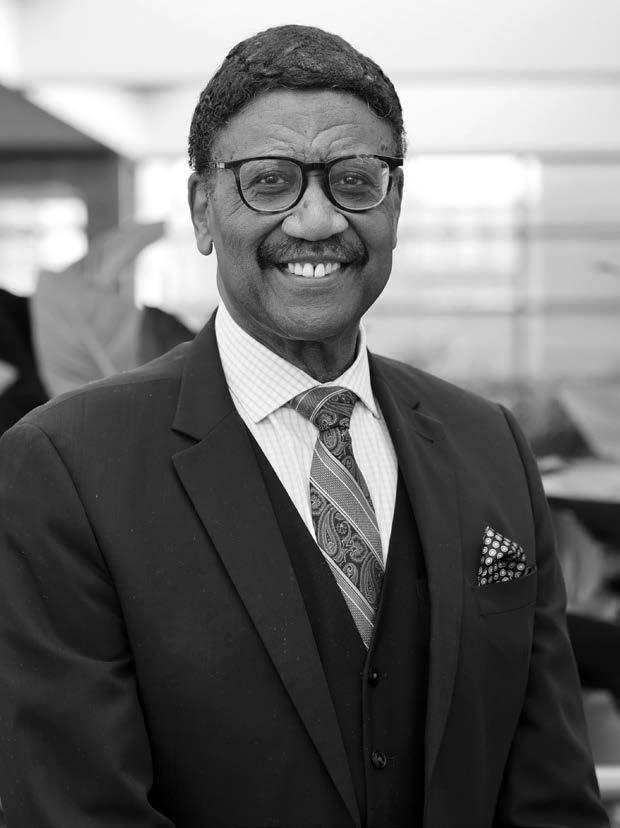
NICK PEARCE
50 DAL MAG SPRING/SUMMER 2024
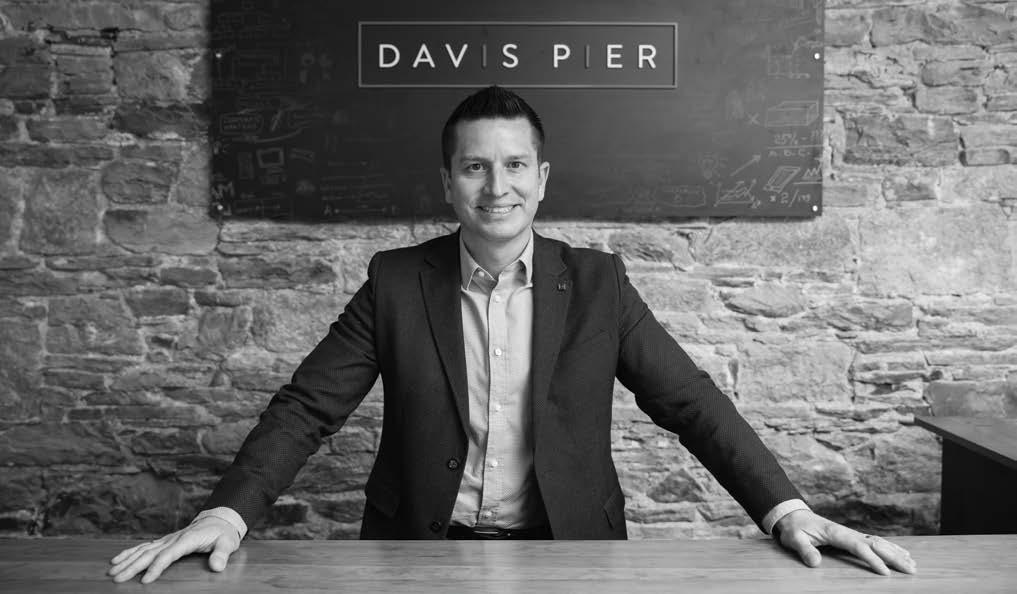
MIKE DAVIS (BEng’01, MEng’08) is president and CEO of Davis Pier Consulting, a social-impact consulting firm founded in Halifax. Davis leads a team of people intent on making the world a better place by engaging communities affected by health-care and social policies in decision-making processes. He also sits on the board of Kids Help Phone, donating his time and talent to improve that organization’s national reach and impact.
Q. How do you define your role within your community?
A. We try to be a voice, almost a translator, between government and community. As an organization, we can help vulnerable communities get their points across with government because we have become a trusted partner. We’ve evolved from a traditional consulting firm model to one that has much more social impact.
Q. What has been your most transformative experience?
A. Understanding the social services system and understanding the complexity of the issues people experiencing poverty face. Seeing how smart and resourceful they are, and seeing how effective it is to involve them in decision-making and designing solutions.
I have every bit of privilege that anybody could have in the world: white male; upper middle-class parents; only child. I try to use that privilege every day through what we’re doing at Davis Pier and in my volunteer work.
Q. What gives you hope?
A. The caring, compassionate, smart young people who work with us.
CODY TURNER
DAL MAG SPRING/SUMMER 2024 51

PATRICIA BISHOP (BSc(Agr)’99) and JOSH OULTON (DipTech'96) are organic farmers and entrepreneurs at Noggins Corner Farm and TapRoot Farms in Port Williams, N.S., who promote food security through their commitment to sustainability and stewardship. The community shared agriculture (CSA) program they created sees boxes of farm-fresh products distributed to over 400 people weekly. They’ve invested in textile production and are the sole producers in Canada growing flax and spinning it into fibre, which is then used to make linen. They’re also known for their commitment to the fair treatment of Jamaican temporary workers, who help grow and harvest their crops.
Q. What is the best part of what you do?
JOSH: Seeing success in growing a good crop. When we all work together to grow a crop and then there’s this bounty... that’s pretty satisfying.
PATRICIA: I love that we are helping people build a connection with the earth—whether it’s through their relationship with food or their relationship with fibre.
Q. Can you share a moment with a customer that stands out?
JOSH: Often, we clear out soon-to-expire produce so we don't waste it. We put it all out for anyone to take for free. One woman came in and filled up her grocery bags and then she just gave me a big hug. She was so happy to have this food. Her appreciation really stuck with me.
PATRICIA: When we first launched our CSA, 50 people joined immediately just because they wanted to support us and our farming venture and organic growing. And we will often come home and there will be a bottle of jam or something that someone has made with produce from their CSA and they’ve dropped it off to us with a little note of thanks. That is really nice.
52 DAL MAG SPRING/SUMMER 2024 EMILY MACKINNON
DR. JEFF DAHN (BSc’78) is a professor emeritus in Dalhousie’s department of Physics and Atmospheric Science. He is best known for contributing to the development of lithium-ion batteries, which are used in electric vehicles, laptops and cellphones. Since 2016, he has worked with Tesla Motors as that company’s only university research partner, and he is currently trying to figure out how to prove that lithium-ion batteries can last beyond 50 years...without spending 50 years testing them.
Q. What is the best piece of advice you’ve ever gotten?
A. A thing my dad told me: if you’re going to do a job, do it right or don’t do it at all.
Q. Is it ever too late to change your mind?
A. No, and it happens all the time in research—we’ll start a project, and it just doesn’t pan out, and then we have to retrench and go somewhere else. I’m not afraid of being wrong. Certainly, I’ve been wrong many times and I’m one of the first to admit it when it happens.
We have a toy crow in the lab, a little black furry thing, and when people do something silly or wrong, they get the crow. I think I have been the biggest holder of the crow. That’s just the way it is: you have to stick your neck out. Sometimes you want to make progress and do something new and many times it just doesn’t pan out.
Q. Are you an early bird or a night owl?
A. Since my graduate school days, I’ve been an early bird. My research supervisor at UBC was one, and he would get to the lab first and look at all the experimental results. He’d say, ‘Jeff, look at this, look at that, what does this mean,’ and so on, and I decided I didn’t like that. I wanted to be there first so I could see the results first.
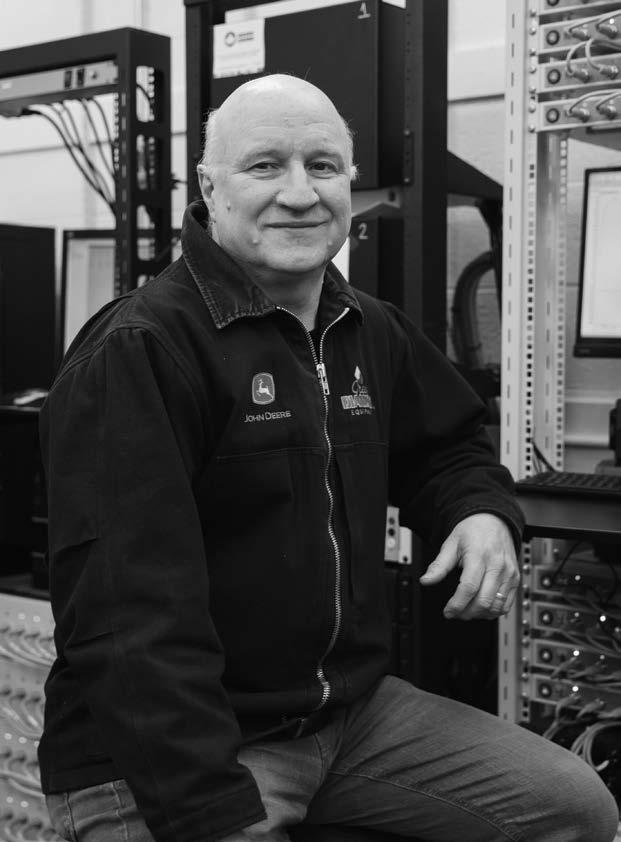
It is nothing short of inspiring to learn about the incredible work being done by our alumni to strengthen our communities, both here and abroad. Their stories are proof that it only takes one person to make a difference and to create lasting change.
We thank all members of our community who submitted a nomination for this year’s Aurum Awards program, as well as the Dalhousie Alumni Association Awards Committee, who were tasked with narrowing down an abundance of incredible submissions.
If you know an alum who deserves to be recognized for their accomplishments, whether in research and innovation, community engagement and leadership, or for their contributions to the social, cultural, and economic well-being of society, stay tuned for nomination information for the 2025 Aurum Awards, which will open this September.
EMILY MACKINNON
53 DAL MAG SPRING/SUMMER 2024
CLASS NOTES
For additional class notes, visit alumni.dal.ca/class-notes
1960s ’67
The Canadian Public Relations Society-Nova Scotia (CPRS-NS) presented Mary Barker (BA) with a Lifetime Achievement Award in 2023 in recognition of and appreciation for her contributions to the PR profession and to CPRS both nationally and here in Nova Scotia.
’68
Cynthia Pilichos (BA, BEd) is co-lead of the Women’s Division Dalhousie Alumni Association, the oldest alumni association at Dal. Its first task was securing housing for female students so they could pursue a university degree (what would become Shirreff Hall). Under a core mandate of “enhancing student experience,” there are
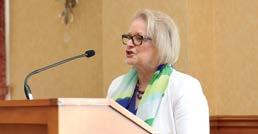
also several named scholarships that were contributed to the university through the Women’s Division, bursaries—including one for international study—and awards and medals in several faculties. Cynthia shares that the Women’s Division is now revisiting its mandate and hoping for a revitalized presence in the future.
’69
William (Bill) Bezanson (MEng) published his eighth book, Your Lives and How to Live
Them, in October 2023. Based on the author’s re-experiences of seven of his previous lives, the book focuses on the concept of reincarnation, plus spiritual and mystical teachings.
After completing his PhD in structural engineering at the Nova Scotia Technical College, Dr. Mel Hosain (PhD) began teaching at the University of Saskatchewan. Dr. Hosain was honoured by the Engineering Advancement Trust at the University of Saskatchewan with an Alumni Service Award, citing his many teaching awards and creation of two endowed scholarships. He turned 86 in February 2024.
1970s
’73
Congratulations to Schulich alum Donald P. Large, K. C. (JD), who was recently honoured with an Honorary Membership in the Canadian Bar Association. Donald is practicing part time from his home in Quispamsis, N.B., and is currently a member of the Law Society of the Northwest Territories.
Debra Burleson (BSc, MPA’90) marked the 50th anniversary of her first Dal graduation by returning as an undergraduate student. She is greatly enjoying the company of Dal’s young students and Dr. Julia Poertner in the German language studies program.
Schulich alum John McLeish (JD) was recently named the 2024 Personal Injury Litigation Lawyer of the Year in Toronto by Best Lawyers®. John is the founding partner of McLeish Orlando, a firm that represents individuals who have been injured or who have lost a loved one through the negligence of others. He remains an Atlantic Canadian at heart!
’76
With 40 years of experience in the oil and gas industry, Douglas Evans (BASc) is sharing his knowledge and leaving a legacy of safety. He has co-authored two books: Process Safety Management: Leveraging Networks and Communities of Practice for Continuous Improvement and 7 Fundamentals of an Operationally Excellent Management System, both available through CRC Press.
Dr. Emelita A. Jackie Outerbridge (BA, BEd) is a nationally certified school psychologist in Bermuda, a licensed psychologist and Diplomate in School Neuropsychology at the American Board of School Neuropsychology.
1980s ’81
Sara Filbee (MBA/LLB) has recently published a book about how one gets things done in a complex workplace, entitled Managing in Complexity: How Our Fears of Uncertainty Can Hurt Us and What to Do About It (Taylor & Francis, Routledge). It is inspired by complexity sciences, and, unlike much of management theory, takes
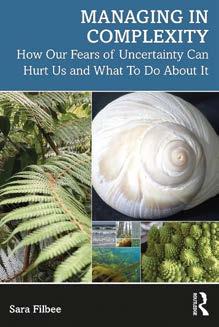
social theory into account, drawing heavily upon pragmatic philosophy, group dynamics and group sociology.
’85
Ahmed Shalabi (BEng) has recently published his first work of fiction: Humanity’s Beauty and Risk: Poetic and Philosophic Reflections. He was also appointed member of the Governing Council for Standards Council of Canada.
’89
Tonie Chaltas (Arnold) (BComm) was named one the 2023 Top 100 Powerful Women in Canada. Tonie is the CEO of Achev, one of the largest providers of employment, newcomer, language, youth, women, and inclusion services in the Greater Toronto Area.
1990s
’90
Caleb Gibbons, CFA, FRM (MBA) returned to Canada in 2021 to teach finance at Cape Breton University after 25 years in New York, Singapore, and, most recently, Tokyo. It’s been quite an adjustment coming from a city of 30 million to 100,000 in the Cape Breton Regional Municipality!
DAL MAG SPRING/SUMMER 2024 54
’94
Roger Thompson (MA) is retiring after 18 years at Kyung Hee University (KHU) in Korea, one of Asia’s Top 50 Universities. He taught a course about the ethics of Star Trek, a civics class based on the philosophy of President Kennedy, and English classes focused on the novels of Charles Dickens. He was awarded a 24k gold medal in recognition of his service to KHU. Roger is returning to Halifax in March 2024 and plans to write a memoir of his days as Korea’s first Star Trek professor.

’95
Angela Campagnoni (BA) has been named one of Atlantic Canada’s 25 Most Powerful Women in Business by Atlantic Business Magazine. She is an influential brand director and author, and gives back to her community while growing Atlantic Canada’s fashion industry.
’98
Professor Robert (Rob) Currie (LLB) was appointed His Majesty’s Counsel Learned in the Law (King’s Counsel) in May 2023. The appointment is in recognition of Rob’s scholarship in transnational criminal law and his public service, including a decade with the Access to Justice and Law Reform Institute of N.S., and a year working pro bono as Special Appeals Counsel at Nova Scotia

Legal Aid. Dalhousie designated Rob a Distinguished Research Professor (2021–2026).
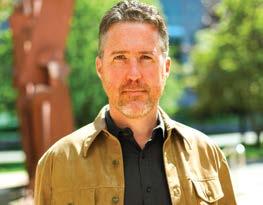
2000s ’01
Asim Khan (BEng, MASc’04, PhD’11) is celebrating the 10year anniversary of Analyze and Improve Inc., an operational improvement and management consulting firm. Asim started this business as a partnership in March 2014. In the last decade,




the company has delivered many successful projects around the globe and has become one of the continuous improvement brands of choice, especially in the mining and natural resource industry.
’03
Sura Hadad’s (DDS) dedication to helping others and her quest to make the world a better place earned her the Queen Elizabeth II’s Platinum Jubilee medal in 2023, and a Platinum Jubilee Halifax West Community Hero Award in 2022.


DAL MAG SPRING/SUMMER 2024 55 Tracy Shuttleworth 902.483.9078 www.tracyshuttleworth.ca Tracy@tracyshuttleworth ca Real Estate Agent Having personal experience of immigration and cross provincial moves, I now help other families do the same! Interested in buying a home or investment property? Contact me for a free, no obligation consultation. Relocation Certified Not intended to solicit persons under contract
’06
Amy Dietrich (MLIS) was recently promoted to Research & Competitive Intelligence Director at Paul, Weiss, Rifkind, Wharton & Garrison LLP in New York City. She also serves on the board of directors of the Law Library Association of Greater New York.
’07
Beatrice Harris (BSW, MSW’22) has always taken immense pride in her heritage as a member of the esteemed Blackfoot First Nation. Since attaining her Master of Social Work, Beatrice has been contributing to her field in a meaningful way. She is currently serving as an instructor in the social service program at Northern Lights College.
Beatrice recently completed a research project focused on applying an anti-colonial education perspective to the social service program. ’08
For the last 15 years, Tracy Marques (DTech) has been working in the agriculture and pet industries. Tracy is excited to share that in November 2022 they began their own homesteading journey, with two border collie heeler pups and chickens! Tracy wishes to extend thanks to their Aggie family and Enterprise Management Education, which they obtained at the Dalhousie Agriculture Campus in Truro.
’09
Founded by Natalie Kassen (BA) in 2022, Kassen Recruitment is a boutique accounting and finance recruitment firm in downtown Toronto. Kassen Recruitment has over 20 employees and a very active job board, recruiting candidates from across Canada and the U.S.

The Dalhousie Golden Eagle Lifetime Achievement Award
Recognizing accomplishment, skill and commitment.

The Dalhousie Golden Eagle Lifetime Achievement Award celebrates a remarkable alum with a long-standing connection and commitment to the advancement of academic excellence at Dalhousie University. Recipients are selected based on an established connection to Dalhousie, including elements of their education, professorship, research or volunteerism, and value-alignment.
Dalhousie University is delighted to announce the appointment of Dr. Frank Lovely, DDS’59 as the 2024 Golden Eagle Lifetime Achievement Award recipient.
2010s ’12
Nathaniel Smith (MPA/MLIS) has been appointed Assistant Deputy Minister at the Alberta Public Service Commission.
’ 17
Alana Riley (MBA) is a senior financial services executive and active community member. As head of Mortgage, Insurance & Banking with IG Wealth Management, she leads the strategic direction and execution for these independent business lines to provide curated solutions and services for advisors to enable holistic wealth planning for Canadians. She is also an active volunteer and president of the Dalhousie Alumni Association, a worldwide community that


builds connections between alumni and Dalhousie. Her son Christian is studying Business Management at Dal and plays on Dal’s football team.
’18
Sarah Dela Cruz (BA, MPA’21) moved to P.E.I. from the Philippines when she was 14. She is a proud granddaughter of one of the Filipino pioneers on P.E.I. She is the first in her family to pursue higher education. Often the only Filipino in her class, Sarah rose above barriers and racism to achieve success. She now works in the Department of National Defence as a policy analyst.
2020s
’20
After working in primary care, Leslie McCarthy (MN), is specializing in psychiatry and mental health. She is working on becoming WPATH (World Professional Association for Transgender Health) certified, with the plan to lower barriers to transgender health care. She is preparing to write the CNA exam for psychiatric and mental health certification.
Thomas Sangwine (BComm) was recently promoted from analyst to associate within the ratings and monitoring team at RBC Capital Markets. Originally brought on as a co-op student in 2021, Thomas was offered a fulltime position upon graduation.
’21
Jennifer Dubois (BComm) always hoped to stay in Nova Scotia post-graduation. After meeting her partner in the commerce program at Dal, the couple recently bought their first home. They’re looking forward to walking on nearby beaches this summer with their dog, Hudson.
’22
Schulich alum Rob Richler (LLB/MBA) was recently admitted to the partnership and named employment law team lead at Bernardi Human Resource Law LLP in Mississauga, Ont.


Brenda Hogan (MBA) and William Woodcock are engaged to be married. The wedding will take place in late summer 2024 in Toronto.
After a celebratory grad trip to Mexico with friends, William Mai (BMgmt) moved to Alberta to work in digital marketing. Recently, he took a job as an analyst at Northback Holdings.
Food banks might not be top of mind coming into spring and summer, but ongoing support is vital to meet demand.
Food banks might not be top of mind coming into spring and summer, but ongoing support is vital to meet demand.
A well-stocked food bank takes one less worry away for students who need this service, and lets them concentrate on their studies.
A well-stocked food bank takes one less worry away for students who need this service, and lets them concentrate on their studies.
Make your gift today by visiting giving.dal.ca, or scan this QR code now.
Thank you. Can you help top up our campus food banks this spring?
Thank you. Can you help top up our campus food banks this spring?
Make your gift today by visiting giving.dal.ca, or scan this QR code now.
’23
FACULTY NEWS
Agriculture
Architecture and Planning
Arts and Social Sciences
Computer Science
Dentistry
Engineering
Graduate Studies
Health
Law
Management
Medicine
Open Learning and Career Development
Science
University Libraries
AWARDS AND HONOURS
Dr. Frank Lovely, professor emeritus in the Faculty of Dentistry and creator of its MSc in Oral and Maxillofacial Surgery, is the recipient of the 2024 Golden Eagle Lifetime Achievement Award.
The Faculty of Arts and Social Sciences presented the 2023-24 annual faculty awards to Dr. Colin Mitchell (History), who received the Award for Service Excellence, and Dr. Emily Varto (Classics), who received the Award for Excellence in Teaching.
The 2023-24 Faculty of Arts and Social Sciences Staff Award for Excellence in Service was jointly awarded to administrative coordinators Michele Edgerton
















(History) and Norma Ranieri (Multidisciplinary Centre).
Dr. Elaine Craig (LLB’04, JSD’10) was one of eight Canadian researchers selected to receive the Dorothy Killam Fellowship, one of the most esteemed academic awards in the country.
Dalhousie Engineering researcher and Dean of Architrure and Planning
Dr. Graham Gagnon has been elected as a Fellow of the Canadian Academy of Engineering (CAE). The prestigious honor is one of the highest recognitions an engineer can receive.
Professor Emeritus Richard Kroeker was appointed a member of the Order of Canada late last year for his




We are future makers. Visit careers.mccain.com and apply today! Explore all our Early Talent job postings.
distinguished service and invaluable contributions to the field of architecture.
Professors Najah Attig and Oumar Sy won the Graham and Dodd Scroll Award. Dr. AllisonCassin and her team received $1.8 million from the Mellon Foundation for the Respectful Terminologies Platform Project.
APPOINTMENTS AND RETIREMENTS
The Faculty of Arts and Social Sciences congratulates the following colleagues on their retirements: Mary Beth MacIsaac (administrative coordinator, English); and faculty members Dr. Jolanta Pekacz (History) and Susan Stackhouse (Fountain School of Performing Arts).
Claire McNeil (LLB’85), staff lawyer at Dalhousie Legal Aid Service, retired in December 2023. She accomplished a great deal in her 30-year career in the areas of student impact and systemic change.
Dr. Sonil Nanda was named a Tier 2 Canada Research Chair in Clean Agricultural Technology and Energy. His research aims to convert by-products of agriculture and forestry into high-value biofuels.
Landscape Architecture programs have been renamed and revamped to better set students up for success. Students will now receive a degree in Landscape Architecture or a diploma in Landscape Horticulture.
After three degrees of teaching and leadership positions, including acting dean of the Faculty of Management, Dr. Vivian Howard has retired.
EVENTS AND REUNIONS
The Dal School of Nursing is proud to be celebrating 75 years of excellence in nursing education and research in 2024. We look forward to celebrating this milestone together with our alumni family, as well current and past faculty and staff. Check Dal.ca/nursing for details.
Faculty of Dentistry DentDays will take place on 25-26 October, featuring 50th and 25th anniversary luncheons, reunions, CE, Outstanding
Alumni Awards, and a Nova Scotia kitchen party. See you there!
Students at the School of Planning hosted a successful Shift Conference in March 2024. This year’s theme was Growing Pains, which explored community growth and the technical ways that planners can respond to challenges and identify opportunities from rapid change.
You may submit a FACULTY NEWS OR CLASS NOTES NOTICE by emailing classnotes@dal.ca

FUTURE ALUMNI
Forging Connections
hether it’s between her two areas of study— history and political science—or the way she helps to build community in her role as president of the Undergraduate History Society, Kriti Maini is all about connections.
Maini arrived with her family from India in 2017 and completed high school in Halifax. She’d known she’d study the humanities from the time she was in middle school, so after high school graduation she jumped into the University of Kings Foundation Year program—right as the COVID-19 pandemic began. After an unorthodox start to her university studies, she entered the history program at Dalhousie.
“I like to study the process of studying history itself or historiography. It’s not so much a specific century or subject area, but how people engage with history—how we create it, how we relate to it, what role it plays in our lives.” In her second year Maini took a political science course and discovered the connection between the theories of that discipline and her understanding of history.
“I feel like the two disciplines answer questions very differently, and often in ways that complement each other,” she says.
She’ll graduate in spring 2025 with combined honors in political science and history.
Apart from connecting her two areas of study, she’s also interested in connecting students with similar interests. As president of the Undergraduate History Society, she’s worked to gather a great team not only to publish the undergraduate journal, Pangaea, but also to create programming for history students and others in the faculty. They’ve had movie and trivia nights and a winter social, with plans for more events in the future. Maini says student societies can be a source of peer support and a way for students to make sure their university experience is not all work and no play.
“Societies and events are such an important social resource for students,” she says. “The social aspect of school is easily missed between class work and assignments. To offer events in a non-stressful, friendly atmosphere is essential and people enjoy it.”
—AnnMarie
MacKinnon

“I feel like the two disciplines answer questions very differently, and often in ways that complement each other.”
DAL MAG SPRING/SUMMER 2024 60
W NICK PEARCE

Where discovery meets diagnosis
Offering some of the most advanced health research and education in Canada, we train the next generation of health-care providers with the skills needed to deliver exceptional care.
Dedicated to improving health outcomes, our students and researchers play a vital role in the well-being of patients and communities in Nova Scotia and around the world.

Learn more at dal.ca/health-impact
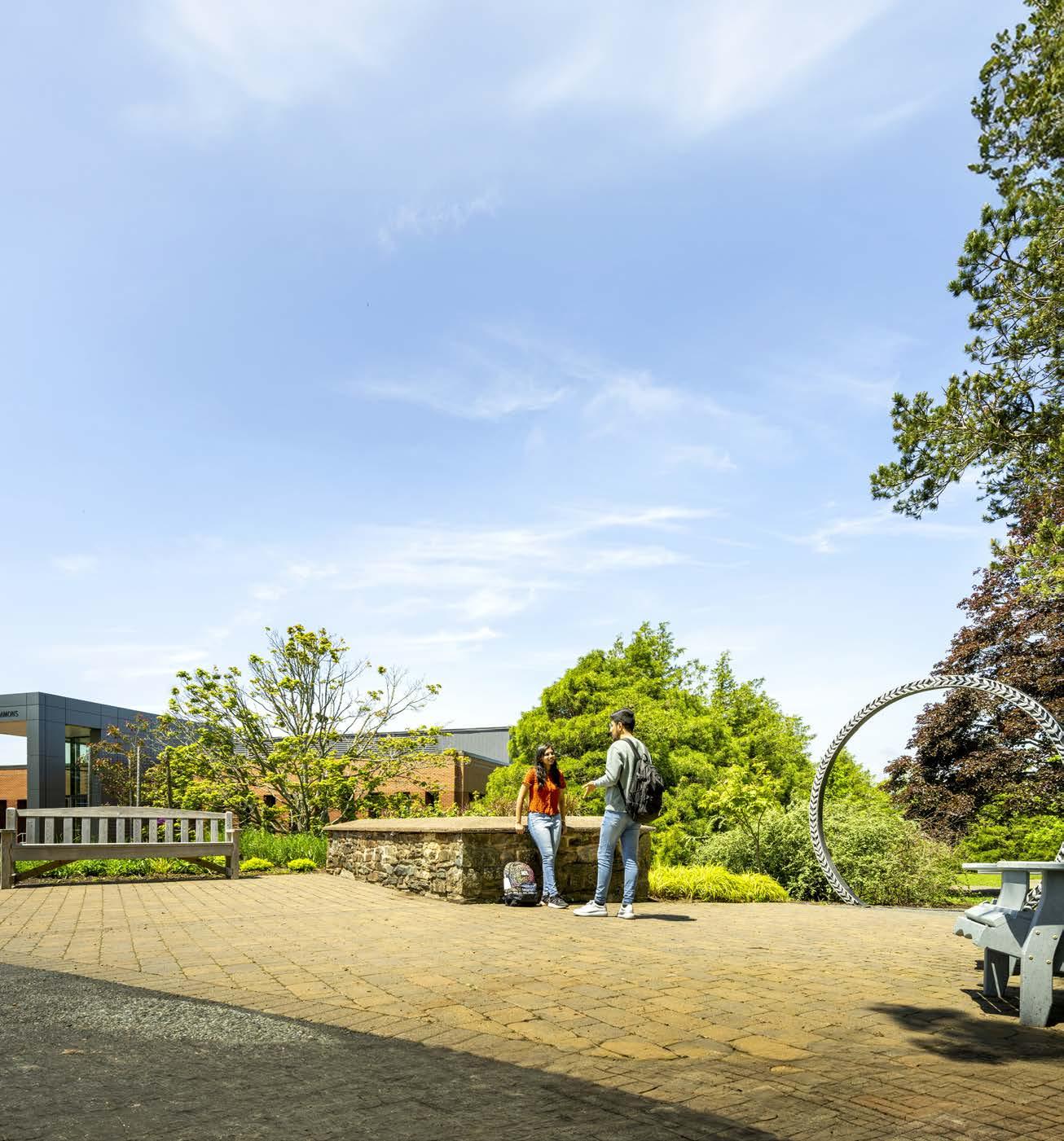
Where open spaces meet open minds
The Faculty of Agriculture on the Agricultural Campus in Truro is commited to addressing the significant challenges to local and global sustainability, food security, and health and well-being that have been targeted by the United Nations Sustainable Development Goals. When you study here, you can help make a global impact
As a student here, you will reap the benefits of studying at one of Canada’s research powerhouse universities, while experiencing the exceptional and individualized attention that comes with our tight-knit community.
Inspire and ignite a world of change at Dalhousie University.
CANADA POST PUBLICATIONS: MAIL PM41901013 RETURN UNDELIVERABLE ITEMS TO: ALUMNI OFFICE, DALHOUSIE UNIVERSITY, PO BOX 15000, HALIFAX, NS B3H 4R2
Learn more at dal.ca/think-agriculture





























































































































 BY MATT REEDER
BY MATT REEDER


















































